Étiquette : UNESCO
Paris Schiller Institute stages Afghan civil society protest against UNESCO

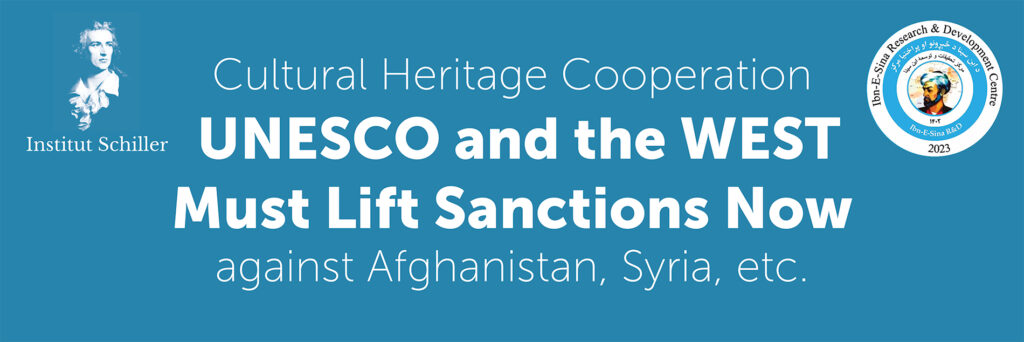
Paris, Feb. 2024 – On Thursday February 22, between 10:00 am and 1:00 pm CET, members and supporters of the International Schiller Institute, founded and presided by Helga Zepp-LaRouche, gathered peacefully in front of one of the main buildings of the headquarters of UNESCO in Paris (1, rue Miollis, Paris 75015). An appeal (see below), endorsed by both Afghans and respected personalities of four continents, was presented to the Secretary General and other officials of UNESCO.
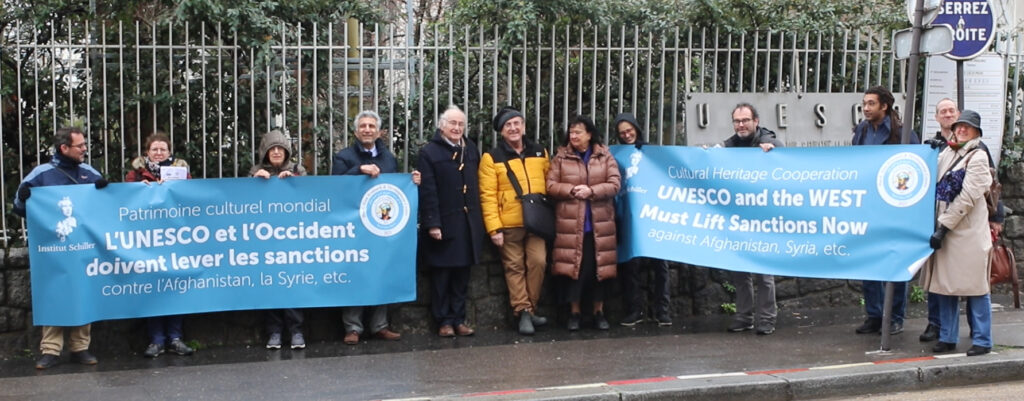
How it started
Following a highly successful conference in Kabul last November by the Ibn-e-Sina Research & Development Center on the reconstruction of Afghanistan, a group of senior archaeologists of the Afghan Academy of Sciences (ASA), in discussion with the organizers and the invited experts of the Schiller Institute, suggested to launch a common appeal to UNESCO and Western governments to “lift the sanctions against cultural heritage cooperation.”
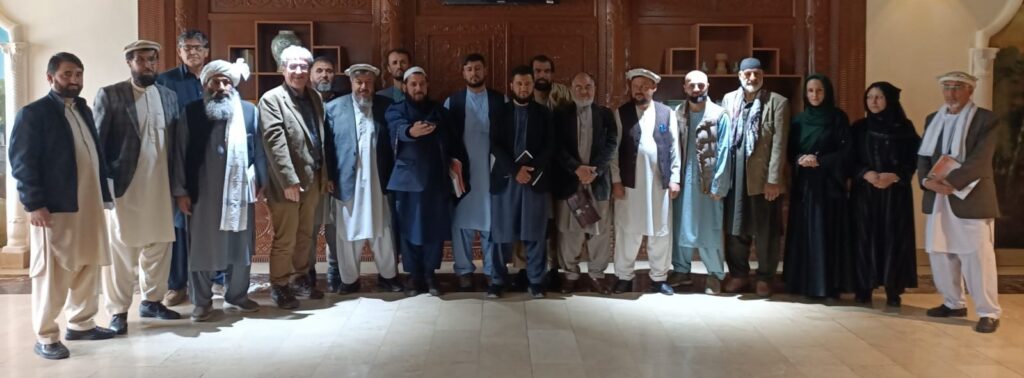
The Call
“We regret profoundly, says the call, that the Collective West, while weeping crocodile tears over destruction of the world’s cultural heritage, has imposed a selective ban of scientific cooperation on nations mistakenly considered as “opposed to its rules and values.” The complete freeze of all cooperation in the field of archaeology between France and both Syria and Afghanistan, is just one example of this tragedy.”
“The dramatic neglect of international cultural institutions and donors to Afghanistan, the lack of sufficient funds in the field of cultural heritage protection, and the political treatment of international cultural heritage institutions have seriously endangered Afghanistan,” underscores the petition.
Specifically, “UNESCO, which should raise its voice against any new form of ‘cultural and scientific apartheid,’ has repeatedly worsened the situation by politicizing issues beyond its prerogatives.”
To conclude, the signers call
“on the international community to immediately end this form of ‘collective punishment,’ which creates suffering and injustice, promotes ignorance, and endangers humanity’s capacity for mutual respect and understanding.”
Living Spirit of Afghanistan
To date, over 550 signatures have been collected, mainly from both Afghan male (370) and female (140) citizens, whose socio-professional profiles indicates they truly represent the « living spirit of the nation ».
Among the signatories: 62 university lecturers, 27 doctors, 25 teachers, 25 members of the Afghan Academy of Sciences, 23 merchants, 16 civil and women’s rights activists, 16 engineers, 10 directors and deans of private and public universities, 7 political analysts, 6 journalists, 5 prosecutors, several business leaders and dozens of qualified professionals from various sectors.
International support
On four continents (Europe, Asia, America, Africa), senior archaeologists, scientists, researchers, members of the Academy of Sciences, historians and musicians from over 20 countries have welcomed and signed this appeal.
Italian Professor Pino Arlacchi, a former member of the European Parliament and the former head of United Nations Office on Drugs and Crime (UNODC) was the first to sign. Award-winning American filmmaker Oliver Stone, is a more recent signer.
In France, Syria, Italy, the UK and Russia, among the signers one finds senior researchers suffering the consequences of what some have identified as a « New Cultural Cold War. » Superseding the very different opinions they have on many questions, the signatories stand united on the core issue of this appeal: for science to progress, all players, beyond ideological, political and religious differences, and far from the geopolitical logic of ‘blocs’, must be able to exchange freely and cooperate, in particular to protect mankind’s historical and cultural heritage.
Testifying to the firm commitment of the Afghan authorities, the petition has also been endorsed by the Deputy Minister of Foreign Affairs, the Minister of Culture and Arts, and the Minister of Agriculture, as well as senior officials from the Ministries of Higher Education, Water and Energy, Mines, Finance, and others.
“The 46th session of UNESCO’s World Heritage Committee, to be held in New Delhi in July this year, offers UNESCO the opportunity to announce Afghanistan’s full return into world heritage cooperation, if we can have our voice heard,” says Karel Vereycken of the Paris Schiller Institute. “We certainly will not miss transmitting this appeal to HE Vishal V Sharma, India’s permanent representative to UNESCO, recently nominated to make the Delhi 46th session a success.”
For all information, interview requests in EN, FR and NL:
Karel Vereycken, Schiller Institute Paris
00 33 (0)6 19 26 69 38
Full text of the appeal
International Call to Lift Sanctions Against Cultural Heritage Cooperation
Following the international conference, organized by the Ibn-e-Sina Research & Development Center’s in Kabul in early November 2023, on the reconstruction of Afghanistan, a group of researchers launched the following petition:
We, the undersigned, researchers and experts in the domains of the history of civilizations, cultural heritage, archaeology, anthropology, sociology, and many other fields, and other enlightened citizens of the world, in Afghanistan, Syria, Russia, China, and many other countries, launch the following call.
1) We regret profoundly that the “Collective West”, while weeping crocodile tears over destruction of the world’s cultural heritage, has imposed a selective ban of scientific cooperation on nations mistakenly considered as “opposed to its rules and values.” The complete freeze of all cooperation in the field of archaeology between France and both Syria and Afghanistan, is just one example of this tragedy.
2) We request particular attention to the case of Afghanistan. Its neighboring countries, national and international institutions, and countries involved in international conventions for the protection of cultural and natural heritage are committed to cooperation in the field of guarding cultural heritage sites and artifacts and preventing their smuggling and destruction. Therefore, it is expected that in the current situation, they will fully play their role in the protection of Afghanistan’s cultural heritage in accordance with international laws and conventions. However, the dramatic neglect of international cultural institutions and donors to Afghanistan, the lack of sufficient funds in the field of cultural heritage protection, and the political treatment of international cultural heritage institutions have seriously endangered Afghanistan. Undoubtedly, the non-recognition of the Afghan government has dimmed the attention of cultural institutions. Considering the above, we expect these international institutions to renew their full support to protect both the tangible and the intangible cultural heritage of Afghanistan.
3) We regret that UNESCO, which should raise its voice against any new form of “cultural and scientific apartheid,” has repeatedly worsened the situation by politicizing issues beyond its prerogatives.
4) Therefore, we call on the international community to immediately end this form of “collective punishment,” which creates suffering and injustice, promotes ignorance, and endangers humanity’s capacity for mutual respect and understanding.
The progress of scientific knowledge, in a positive climate permitting all to share it, is by its very nature beneficial to each and to all and to the very foundation of a true peace.
SIGNERS:
A. FROM AFGHAN CIVIL SOCIETY:
– Hussain Burhani, Archaeologist, Numismatist, Afghanistan ;
– Ketab Khan Faizi, Archaeologist, Director of the Academy of Sciences at the International Centre for Kushan Studies in Kabul, Afghanistan;
– Stora Ishams Mayar, Archaeologist, member of the Academy of Sciences at the International Centre for Kushan Studies in Kabul, editor in chief of the journal of this mentioned center, Afghanistan;
– Mahmood Jan Drost, Senior Architect, head of protection of old cities of Afghanistan, Ministry of Urban Development and Housing, Afghanistan;
– Ghulam Haidar Kushkaky, Archaeologist, associate professor, Archaeology Investigation Center, Afghanistan ;
— Laieq Ahmadi, Archeologist, Former head, Archeology department of Bamiyan University, Afghanistan;
– Shawkatullah Abed, Chief of staff, Afghan Science Academy, Afghanistan;
– Sardar Ghulam Ali Balouch, Head of Afghanistan Balochs Union, Afghanistan;
– Daud Azimi Shinwari, Ibn-e-Sina Research & Development Center, Germany;
– Abdul Fatah Raufi, Ibn-e-Sina Research & Development Center, Kabul, Afghanistan;
– Mirwais Popal, Dip, Master, Ibn-e-Sina Research & Development Center, Germany;
B. FROM ABROAD:
(Russia, China, USA, Indonesia, France, Angola, Germany, Turkiye, Italy, UK, Mexico, Sweden, Iran, Belgium, Argentina, Czech Republic, Syria, Congo Brazzaville, Yemen, Venezuela, Pakistan, Spain, Canada, Democratic Republic of Congo.)
– H.E. Mr Mohammad Homayoon Azizi, Afghanistan’s Ambassador to Paris, UNESCO and ICESCO, France;
— Julio Bendezu-Sarmiento, Researcher at the National Scientific Research Centre (CNRS), Archaeologist specializing in Central Asia; Former director of the Delegation of French Archaeologists in Afghanistan (DAFA) (2014-2018), France;
– Inès Safi, CNRS, Researcher in Theoretical Nanophysics, France;
– Pierre Leriche, Archeologist, Director of Research Emeritus at CNRS-AOROC, Scientific Director of the Urban Archaeology of the Hellenized Orient research program, France;
– Nadezhda A. Dubova, Institute of Ethnology and Anthropology, Dr. in Biology, Prof. in History. Head of the Russian-Turkmen Margiana archaeological expedition, Russian Academy of Science (RAS), Russia;
— Alexandra Vanleene, Archaeologist, specialist in Gandhara Buddhist Art, Researcher, Independant Academic Advisor Harvard FAS CAMLab, France;
– Raffaele Biscione, retired, associate Researcher, Consiglio Nazionale delle Recerche (CNR); former first researcher of CNR, former director of the CNR archaeological mission in Eastern Iran (2009-2022), Italy;
— Sandra Jaeggi-Richoz, Professor, Historian and archaeologist of the Antiquity, France;
– Dr. Razia Sultanova, Professor, Cambridge University, UK;
– Dr. Houmam Saad, Archaeologist, Directorate General of Antiquities and Museums, Syria;
– Estelle Ottenwelter, Institute of Archaeology, Czech Academy of Sciences, Natural Sciences and Archaeometry, Post-Doc, Czech Republic;
– Didier Destremau, author, diplomat, former French Ambassador, President of the Franco-Syrian Friendship Association (AFS), France ;
– Wang Feng, Professor, South-West Asia Department of Chinese Academy of Social Sciences (CASS), China;
– Dr. Engin Beksaç, Professor, Trakya University, Department of Art History, Turkiye;
– Bruno Drweski, Professor, National Institute of Oriental Languages and Civilizations (INALCO), France;
– Maurizio Abbate, National President of National Agency of Cultural Activities (ENAC), Italy;
– Patricia Lalonde, Former Member of the European Parliament, vice-president of Geopragma, author of several books on Afghanistan, France;
– Pino Arlacchi, Professor of sociology, Former Member of the European Parliament, former head of United Nations Office on Drugs and Crime (UNODC), Italy;
– Oliver Stone, Academy Award-winning Film director, Producer, and Screenwriter;
– Graham E. Fuller, Author, former Station chief for the CIA in Kabul until 1978, former Vice-Chair of the National Intelligence Council (1986), USA;
– Prof. H.C. Fouad Al Ghaffari, Advisor to Prime Minister of Yemen for BRICS Countries affairs, Yemen;
– Farhat Asif, President of Institute of Peace and Diplomatic Studies (IPDS), Pakistan;
— Dursun Yildiz, Director, Hydropolitics Association, Türkiye;
– Irène Neto, president, Fundacao Dr. Antonio Agostinho Neto (FAAN), Angola;
– Luc Reychler, Professor international politics, University of Leuven, Belgium;
– Pierre-Emmanuel Dupont, Expert and Consultant in public International Law, Senior Lecturer at the Institut Catholique de Vendée, France;
— Irene Rodríguez, Departamento de Historia, Facultad de Filosofía y Letras, Universidad de Buenos Aires, Argentina;
– Dr. Ririn Tri Ratnasari, Professor, Head of Center for Halal Industry and Digitalization, Advisory Board at Journal of Islamic Accounting and Business Research, Faculty of Economics and Business, Universitas Airlangga, Indonesia;
– Dr. Clifford A. Kiracofe, Author, retired Professor of International Relations, USA;
– Bernard Bourdin, Dominican priest, Philosophy and Theology teacher, Institut Catholique de Paris (ICP), France;
– Dr. jur. Wolfgang Bittner, Author, Göttingen, Germany;
– Annie Lacroix-Riz, Professor Emeritus of Contemporary History, Université Paris-Cité, France;
– Mohammad Abdo Al-Ibrahim, Ph.D in Philology and Literature, University Lecturer and former editor in chief of the Syria Times, Syria;
– Jean Bricmont, Author, retired Physics Professor, Belgium;
– Syed Mohsin Abbas, Journalist, Broadcaster, Political Analyst and Political Justice activist, Pakistan;
– Eduardo D. Greaves PhD, Professor of Physics, Universidad Simón Bolívar, Caracas, Venezuela;
– Dora Muanda, Scientific Director, Kinshasa Science and Technology Week, Democratic Republic of Congo;
– Dr. Christian Parenti, Professor of Political Economy, John Jay College CUNY, New York, USA;
– Diogène Senny, President of the Panafrican Ligue UMOJA, Congo Brazzaville;
– Waheed Seyed Hasan, Journalist based in Qatar, former Special correspondent of IRNA in New Delhi, former collaborator of Tehran Times, Iran;
– Alain Corvez, Colonel (retired), Consultant International Strategy consultant, France;
– Stefano Citati, Journalist, Italy;
– Gaston Pardo, Journalist, graduate of the National University of Mexico. Co-founder of the daily Liberacion, Mexico;
– Jan Oberg, PhD, Peace and Future Research, Art Photographer, Lund, Sweden.
– Julie Péréa, City Councilor for the town of Poussan (Hérault), delegate for gender equality and the fight against domestic violence, member of the Sète Agglopole Méditerranée gender equality committee, France;
– Helga Zepp-LaRouche, Founder and International President of the Schiller Institute, Germany;
– Abid Hussein, independent journalist, Pakistan;
– Anne Lettrée, Founder and President of the Garden of Titans, Cultural Relations Ambassador between France and China for the Greater Paris region, France;
– Karel Vereycken, Painter-engraver, amateur Art Historian, Schiller Institute, France;
– Carlo Levi Minzi, Pianist, Musician, Italy;
– Leena Malkki Brobjerg, Opera singer, Sweden;
– Georges Bériachvili, Pianist, Musicologist, France;
– Jacques Pauwels, Historian, Canada;
C. FROM AFGHAN AUTHORITIES
– Sher Mohammad Abbas Stanikzai, Deputy Foreign Minister, Islamic Emirate of Afghanistan (IEA);
– Mawlawi Muhibullah Wasiq, Head of Foreign Minister’s Office, IEA;
– Waliwullah Shahin, Member of Ministry of Foreign Affairs, IEA;
– Sayedull Afghani, Member of Ministry of Foreign Affairs, IEA;
– Hekmatullah Zaland, Member of Ministry of Foreign Affairs, IEA;
– Shafi Azam, Ministry of Foreign Affairs, IEA;
– Atiqullah Azizi, Deputy Minister of Culture and Art, Ministry of Information and Culture, IEA;
– Ghorzang Farhand, Ministry of Information and Culture, IEA;
– Ghulam Dastgir Khawari, Advisor of Ministry of Higher Education, IEA;
– Mawlawi Rahmat Kaka Zadah, Member of ministry of Interior Affairs, IEA;
– Mawlawi Arefullah, Member of Interior Affairs, IEA;
– Ataullah Omari, Acting Agriculture Minister, IEA;
– Mawlawi Hussain Ahmad, Head of office in Ministry of Agriculture, IEA:
– Musa Noorzai, Member of Ministry of Agriculture, IEA;
– Mawlawi Hussain Ahmad, Head of office, Ministry of Agriculture, IEA;
– Mawlawi Shar Aqa, Head of Kunar Agriculture Administration, IEA;
– Matiulah Mujadidi, Head of Communication of Ministry of Finance, IEA;
– Zabiullah Noori, Executive Manager, Ministry of Finance, IEA;
– Akbar Wazizi, Member of Ministry of Finance, IEA;
– Nasrullah Ebrahimi, Auditor, Ministry of Finance, IEA;
– Mir M. Haroon Noori, Representative, Ministry of Economy, IEA;
– Abdul Qahar Mahmodi, Ministry of Commerce, IEA;
– Dr. Ghulam Farooq Azam, Adviser, Ministry of Water & Energy (MoWE), IEA;
– Faisal Mahmoodi, Investment Facilitation Expert, Ministry of Mines and Petroleum, IEA;
– Rustam Hafiz Yar, Ministry of Transportation, IEA;
– Qudratullah Abu Hamza, Governor of Kunar, IEA;
– Mansor Faryabi, Member of Kabul Municipality, IEA;
– Mohammad Sediq Patman, Former Deputy Minister of Education for Academic Affairs, IEA;
COMPLEMENTARY LIST
A. FROM AFGHANS
- Jawad Nikzad, Ibn-e-Sina R&D Centre, Kabul, Afghanistan ;
- Dr. Akram Azimi, Ibn-e-Sina R&D Centre, Kabul, Afghanistan ;
- Najibullah Totakhel, Ibn-e-Sina R&D Centre, Germany
- Ghulam Farooq Ansari, Professor, Ibn-e-Sina R&D Centre, Kabul, Afghanistan ;
- Imran Zakeria, Researcher at Regional Studies Center, Academy of Sciences of Afghanistan, Ibn Sina R&D Centre, Kabul, Afghanistan ;
- Subhanullah Obaidi, Doctor, Ibn-e-Sina R&D Centre, Germany ;
- Ali Shabeez, Ibn-e-Sina R&D Centre, Kabul, Germany ;
- Mawlawi Wahid Ameen, Ibn-e-Sina R&D Centre, Kabul, Afghanistan ;
- Shar M. Amir Zadah, Ibne-eSina R&D Centre, Kabul, Afghanistan ;
- Sayed Rafiullah Halim, Professor, Ibn-e-Sina R&D Centre, Kabul Afghanistan ;
- Nazar Mohmmad Ragheb, Ibn-e-Sina R&D Centre, Kabul, Afghanistan ;
- Ali Sina Masoumi, Ibn-e-Sina R&D Centre Kabul, Afghanistan ;
- Faisal Mahmoodi, Ibn-e-Sina R&D Centre, Kabul, Afghanistan ;
- Fatima Basir, Ibn-e-Sina R&D Centre, Kabul, Afghanistan ;
- Muneera Aman, Ibn-e-Sina R&D Centre, Kabul, Afghanistan ;
- Abdul Shakoor, Ibn-e-Sina R&D Centre, Kabul, Afghanistan ;
- Abdul Waris Ebad, Employee of Ministry of Foreign Affairs, Afghanistan ;
- Waisullah Sediqi, Ibn-e-Sina R&D Centre, Kabul, Afghanistan ;
- Sayed Hakim Aria, Employee of Ministry of Information and Culture, Afghanistan ;
- Nayebuddin Ekrami, Employee of Ministry of information and Culture, Afghanistan ;
- Latifa Azimi, Former Employee of Ministry of Education, Afghanistan ;
- Latifa Noori, Former Employee of Ministry of Education, Afghanistan ;
- Habibullah Haqani, Employee of Kabul Municipality, Afghanistan ;
- Shafiqullah Baburzai, Cultural Heritage, Afghanistan ;
- Abdullah Kamawal, Cultural Heritage, Afghanistan ;
- Abdul Rashid Lodin, Cultural Heritage, Afghanistan ;
- Asef Nang, Cultural Heritage, Afghanistan ;
- Awal Khan Shekib, Member of Afghanistan Regional Studies Center, Afghanistan ;
- Mohammad Anwar Fayaz, Lecturer, Afghanistan Science Academy, Afghanistan ;
- Farhad Ahmadi, Lecturer, Afghanistan Science Academy, Afghanistan ;
- Fayqa Lahza Faizi, Lecturer, Afghanistan Science Academy, Afghanistan ;
- Dr. Hakim Haidar, Lecturer, Afghanistan Science Academy, Afghanistan ;
- Rahimullah Harifal, Lecturer, Afghanistan Science Academy, Afghanistan ;
- Sharifullah Dost, Lecturer, Afghanistan Science Academy, Afghanistan ;
- Eshaq Momand, Lecturer, Afghanistan Science Academy, Afghanistan ;
- Khalil Rahman Barekzal, Lecturer, Afghanistan Science Academy, Afghanistan ;
- Ghulam Haidar Kushkaki, Lecturer, Afghanistan Science Academy, Afghanistan ;
- Ghulam Nabi Hanifi, Lecturer, Afghanistan Science Academy, Afghanistan ;
- Marina Bahar, Lecturer, Afghanistan Science Academy, Afghanistan ;
- Sayed Muhaidin Hashimi, Lecturer, Afghanistan Science Academy, Afghanistan ;
- Abdul Majid Nadim, Lecturer, Afghanistan Science Academy, Afghanistan ;
- Elaha Maqsoodi, Lecturer, Afghanistan Science Academy, Afghanistan ;
- Khadim Ahmad Haqiqi, Lecturer, Afghanistan Science Academy, Afghanistan ;
- Shahidullah Safi, Member, Afghanistan Science Academy, Afghanistan ;
- Abdul Wahab Hamdard, Member, Afghanistan Science Academy, Afghanistan ;
- Burhanullah Niazi, Member, Afghanistan Science Academy, Afghanistan ;
- M. Alam Eshaq Zai, Member, Afghanistan Science Academy, Afghanistan ;
- Ghulam Hasan Farmand, Member, Afghanistan Science Academy, Afghanistan ;
- Zalmai Hewad Mal, Member, Afghanistan Science Academy, Afghanistan ;
- Abdul Rahman Atash, Head of Afghanistan National Development Company (NDC), Afghanistan ;
- Obaidullah, Head of Public Library, Afghanistan ;
- Sayed Abdul Maqdam, Head of Khawar construction company, Afghanistan ;
- Zaki Zarifi, Head of Zarifi company, Afghanistan ;
- Jamshid Faizi, Head of Faizi company, Afghanistan ;
- M. Yasin Farahman, Head of Agriculture Center, Afghanistan ;
- Mawlawi Nik M. Nikmal, Head of Planning in Technical Administration, Afghanistan ;
- Abdul Wahid Rahimi, Member of Bashtani Bank, Afghanistan ;
- M. Daud Mangal, Head of Ariana Afghan Airlines, Afghanistan ;
- Mostafa Yari, entrepreneur, Afghanistan;
- Gharwal Roshan, Head of Kabul International Airfield, Afghanistan ;
- Eqbal Mirzad, Head of New Kabul City Project, Afghanistan ;
- Najibullah Sadiq, Vice-president of Afghan Chamber of Commerce and Indunstry (ACCI), Afghanistan;
- M. Yunis Mohmand, Vice-president of ACCI, Afghanistan;
- Khanjan Alikozai, Member of ACCI, Afghanistan;
- Mawlawi Abdul Rashid, Kabul Municipality, Afghanistan ;
- Atiqullah Safi, Employee of Kabul Municipality, Afghanistan ;
- Abdul Jalil Safi, Employee of Kabul Municipality, Afghanistan ;
- Hujat Fazli, Head of Harakat, Afghanistan Investment Climate Facility Afghanistan ;
- Dr. Mehrab Hamidi, Member of Economical Commission, Afghanistan;
- Hamid Pazhwak, Economist, Afghanistan ;
- M. Awaz Ali Alizai, Economist, Afghanistan ;
- Shamshad Omar, Economist, Afghanistan ;
- Helai Fahang, Economy Specialist, Afghanistan ;
- Maryam Alikozai, Economy Specialist, Afghanistan ;
- Dunya Farooz, Economy Specialist, Afghanistan ;
- Soman Khamoosh, Economy Specialist, Afghanistan ;
- Drs. Shokoria Yousofi, Bachelor of Economy, Afghanistan;
- Sharifa Wardak, Specialist of Agriculture, Afghanistan;
- M. Asef Dawlat Shahi, Specialist of Chemistry, Afghanistan;
- Pashtana Hamami, Specialist of Statistics, Afghanistan;
- Asma Karimi, Master of Management, Afghanistan;
- Dr. Ahmad Zaki Afghanyar, Vice-President of Herat Health committee, Afghanistan ;
- Dr. Hashem Mudaber, Medical Doctor, Afghanistan ;
- Dr. Hekmatullah Arian, Medical Doctor, Afghanistan ;
- Dr. Abdul Wahab Rahmani, Medical Doctor, Afghanistan ;
- Dr. Karima Rahimyar, Medical Doctor, Afghanistan ;
- Dr. Sayeeda Basiri, Medical Doctor, Afghanistan ;
- Dr. Emran Sayeedi, Medical Doctor, Afghanistan ;
- Dr. Abdul Hadi Dawlatzai, Medical Doctor, Afghanistan ;
- Dr. Ghani Naseri, Medical Doctor, Afghanistan ;
- Dr. Nafisa Naseri, Medical Doctor, Afghanistan ;
- Dr. Abdul Ghani Naseri, Medical Doctor, Afghanistan;
- Dr. Mohammad Younis Shouaib, Medical Doctor, Afghanistan ;
- Dr. Halima Akbari, Medical Doctor, Afghanistan;
- Dr. Manizha Emaq, Medical Doctor, Afghanistan;
- Dr. Shafiq Shinwari, Medical Doctor, Afghanistan ;
- Dr. Akbar Jan Foolad, Medical Doctor, Afghanistan ;
- Dr. Haidar Omar, Medical Doctor, Afghanistan ;
- Dr. Ehsanuddin Ehsan, Medical Doctor, Afghanistan ;
- Dr. Abdul Wakil Matin, Medical Doctor, Afghanistan ;
- Dr. Abdul Matalib, Medical Doctor, Afghanistan ;
- Dr. Azizi Amer, Medical Doctor, Afghanistan ;
- Dr. Nasr Sajar, Medical Doctor, Afghanistan ;
- Dr. Humayon Hemat, Medical Doctor, Afghanistan ;
- Dr. Humaira Fayaq, Medical Doctor, Afghanistan ;
- Dr. Sadruddin Tajik, Medical Doctor, Afghanistan ;
- Dr. Abdul Baqi Ahmad Zai, Surgery Specialist, Afghanistan ;
- Dr. Beqis Kohistani, Medical Doctor, Afghanistan;
- Dr. Nafisa Nasiri, Medical Doctor, Afghanistan;
- Dr. Aziza Yousuf, Head of Malalai Hospital, Afghanistan;
- Dr. Yasamin Hashimi, Medical Doctor, Afghanistan;
- Dr. Zuhal Najimi, Medical Doctor, Afghanistan;
- Dr. Ahmad Salem Sedeqi, Medical Doctor, Afghanistan;
- Dr. Fazel Raman, veterinary, Afghanistan;
- Khatera Anwary, Health, Afghanistan;
- Rajina Noori, Member of Afghanistan Journalists Union, Afghanistan ;
- Sajad Nikzad, Journalist, Afghanistan ;
- Ahmad Suhaib Hasrat, Journalist, Afghanistan ;
- Shar Aqa Karimi, Journalist, Afghanistan ;
- Sayed Mohammad Suhrabi , Journalist, Afghanistan ;
- Mohammad Nasir Kuhzad, Journalist and Political Analyst, Afghanistan ;
- Fazel Menallah, Political Analyst, Afghanistan;
- M. Wahid Benish, Political Analyst, Afghanistan ;
- Mahmood Jan Shafizada, Political Analyst, Afghanistan ;
- Fazel Rahman Orya, Political Analyst, Afghanistan ;
- Zarghon Shah Shinwari, Political Analyst, Afghanistan ;
- Abdul Ghafor Shinwari, Political Analyst, Afghanistan ;
- Dr. Ahmad Yousufi, Dean, Kateb University, Afghanistan ;
- Dr. Yayia Balaghat, Scientific Vice-President, Kateb University, Afghanistan ;
- Chaman Shah Etemadi, Head of Gharjistan University, Afghanistan;
- Dr. Mesbah, Head of Salam University, Afghanistan;
- Dr. Pirzad Ahmad Fawad, Kabul University;
- Dr. Nasir Nawidi, Dean of a Private University, Afghanistan;
- Zabiullah Fazli, Dean of a Private University, Afghanistan;
- Ramish Adib, Vice of a Private University, Afghanistan;
- M. Taloot Muahid, Dean of a Private University, Afghanistan;
- Ebrahim Ansari, School Manager, Afghanistan;
- Abas Ali Zimozai, Univ. Lecturer, Afghanistan ;
- Arshad Rahimi, Univ. Lecturer, Afghanistan ;
- Fasihuddin Fasihi, Univ. Lecturer, Afghanistan ;
- Waisuddin Jawad, Univ. Lecturer, Afghanistan ;
- M. Murtaza Sharzoi, Univ. Lecturer, Afghanistan ;
- M. Matin Monis, Univ. Lecturer, Afghanistan ;
- Mohammad Wahid Benish, Univ. Lecturer, Afghanistan ;
- Hussian Iqbal, Univ. Lecturer, Afghanistan ;
- Muhsin Reshad, Univ. Lecturer, Afghanistan ;
- Mohammad Sadiq Baqori, Univ. Lecturer, Afghanistan ;
- Mohammad Zahir Halimi, Univ. Lecturer , Afghanistan ;
- Rohla Qurbani, Univ. Lecturer, Afghanistan ;
- Murtaza Rezaee, Univ. Lecturer, Afghanistan ;
- Ghulam Rasoul Qarluq, Univ. Lecturer, Afghanistan ;
- Najim Wahidi, Univ. Lecturer, Afghanistan ;
- M. Rashid Iqbal, Univ. Lecturer, Afghanistan ;
- Abdul Rahman Matin, Univ. Lecturer, Afghanistan ;
- M. Mujtaba Amin, Univ. Lecturer, Afghanistan ;
- Amanullah Faqiri, Univ. Lecturer, Afghanistan ;
- Abuzar Khpelwak Zazai, Univ. Lecturer, Afghanistan ;
- Belal Tayab, Univ. Lecturer, Afghanistan ;
- M. Adel Hakimi, Univ. Lecturer, Afghanistan ;
- Wasiqullah Ghyas, Univ. Lecturer, Afghanistan ;
- Faridduin Atar, Univ. Lecturer, Afghanistan ;
- Safiullah Jawhar, Univ. Lecturer, Afghanistan ;
- Amir Jan Saqib, Univ. Lecturer, Afghanistan ;
- Ahmad Shekib Rahmani, Univ. Lecturer, Afghanistan ;
- M. Gulzar Hashimi, Univ. Lecturer, Afghanistan ;
- Taj Mohammad, Univ. Lecturer, Afghanistan;
- Hekmatullah Mirzad, Univ. Lecturer, Afghanistan;
- Abdul Haq Atid, Univ. Lecturer, Afghanistan ;
- M. Fahim Momand, Univ. Lecturer, Afghanistan;
- Ahmad Fawad Ehsas, Univ. Lecturer, Afghanistan;
- Naqibullah Sediqi, Univ. Lecturer, Afghanistan;
- Maiwand Wahidi, Univ. Lecturer, Afghanistan;
- M. Nazir Hayati, Univ. Lecturer, Afghanistan;
- Najiba Rahmani, Univ. Lecturer, Afghanistan;
- Abeda Baba Karkhil, Univ. Lecturer, Afghanistan;
- Dr. M. Qayoum Karim, Univ. Lecturer, Afghanistan;
- Sayed Sharif Shabir, Univ. Lecturer, Afghanistan;
- Ahmad Walid Howaida, Univ. Lecturer, Afghanistan;
- Zalmai Rahib, Univ. Lecturer, Afghanistan;
- Dr. Sadiq Baqori, Univ. Lecturer, Afghanistan;
- Mir Zafaruddin Ansari, Univ. Lecturer, Afghanistan;
- Atta Mohammad Alwak, Univ. Lecturer, Afghanistan;
- Dr. Zabiullah Iqbal, Univ. Lecturer, Afghanistan;
- Dr. Hasan Fazaili, Univ. Lecturer, Afghanistan;
- M. Jawad Jalili, Univ. Lecturer, Afghanistan;
- Mukhtar Ali Nasto, Univ. Lecturer, Afghanistan;
- Namatullah Nabawi, Univ. Lecturer, Afghanistan;
- Ghulam Abas Noori, Univ. Lecturer, Afghanistan;
- Mustafa Anwari, Univ. Lecturer, Afghanistan;
- Fakhria Popal, Univ. Lecturer, Afghanistan;
- Shiba Sharzai, Univ. Lecturer, Afghanistan;
- Marya Hashimi, Univ. Lecturer, Afghanistan;
- Nilofar Hashimi, Univ. Lecturer, Afghanistan;
- Munisa Hasan, Univ. Lecturer, Afghanistan;
- Nazifa Azimi, Univ. Lecturer, Afghanistan;
- Sweeta Sharify, Lecturer; Afghanistan;
- Fayaz Gul, Lecturer, Afghanistan;
- Zakia Ahmad Zai, Lecturer, Afghanistan;
- Nigani Barati, Education Specialist, Afghanistan ;
- Azeeta Nazhand, Teacher, Afghanistan ;
- Sughra, Teacher, Afghanistan;
- Nadia Sharif, Teacher, Afghanistan;
- Maryam Omari, Teacher, Afghanistan;
- Masoud, Teacher, Afghanistan;
- Zubair Ahmad, Teacher, Afghanistan;
- Khalil Ahmad, Teacher, Afghanistan;
- Khadija Omid, Teacher, Afghanistan;
- Haida Rasouli, Teacher, Afghanistan;
- Hemat Hamad, Teacher, Afghanistan ;
- Wazir Safi, Teacher, Afghanistan ;
- Mohammad Qasim, Teacher, Afghanistan ;
- Zamin Shah, Teacher, Afghanistan ;
- Sayed Qayas, Teacher, Afghanistan ;
- Mehrabuddin, Teacher, Afghanistan ;
- Zahidullah Zahid, Teacher, Afghanistan ;
- Akmal Mahros, Teacher, Afghanistan ;
- Sadia Mohammadi, Teacher, Afghanistan;
- Mina Amiri, Teacher, Afghanistan;
- M. Sajad Nikzad, Teacher, Afghanistan ;
- Mursal Nikzad, Teacher, Afghanistan ;
- Abdul Qadir Shahab, Teacher, Afghanistan;
- M. Hasan Sahi, Teacher, Afghanistan ;
- Mirwais Haqmal, Teacher, Afghanistan ;
- Leeda Khurasai, Teacher, Afghanistan ;
- Karishma Hashimi, Instructor, Afghanistan;
- Majeed Shams, Architect, Afghanistan;
- Azimullah Esmati, Master of Civil Engineering, Afghanistan;
- Najibullah Hussaini, Engineer, Afghanistan ;
- Burhanuddin Nezami, Engineer, Afghanistan ;
- Abdul Hafiz Hafizi, Engineer, Afghanistan ;
- Bahir, Engineer, Afghanistan;
- Wali Bayan, Engineer, Afghanistan;
- Abdul Khaliq Najir, Engineer, Afghanistan;
- Diana Niazi, Engineer, Afghanistan;
- Imam Jan, Engineer, Afghanistan ;
- Khalil Ahmad Nadem, Engineer, Afghanistan;
- Sayeed Aqa, Engineer, Afghanistan ;
- Edris Rasouli, Engineer, Afghanistan ;
- Raz Mohammad, Engineer of Mines, Afghanistan ;
- Nasrullah Rahimi, Technical Engineer, Afghanistan ;
- Ehsanullah, Helmand, Construction Engineer, Netherlands;
- Ahmad Hamad, Technologist, Afghanistan ;
- Akmal Ahmadi, Technologist, Afghanistan ;
- Ershad Hurmati, Technologist, Afghanistan ;
- M. Akram Shafim, Technologist, Afghanistan ;
- M. Akbar Ehsan, Technologist, Afghanistan ;
- Raziullah, Technologist, Afghanistan ;
- Zaki Khorrami, IT Officer, Afghanistan ;
- Osman Nikzad, Graphic Designer, Afghanistan ;
- Maryam Ayani, Carpet Weaver, Afghanistan ;
- Be be sima Hashimi, Tailor, Afghanistan ;
- Maryam Masoumi, Tailor, Afghanistan ;
- Roya Mohammadi, Craftsman, Afghanistan ;
- Nadia Sayes, Craftsman, Afghanistan ;
- Nazdana Ebad, Craftsman, Afghanistan ;
- Sima Ahmadi , Bachelor of Biology, Afghanistan;
- Sima Rasouli, Merchant, Afghanistan ;
- Khatera Nawabi, Merchant, Afghanistan ;
- Haji Noor Agha Haqyar, Merchant, Afghanstan;
- Husna Anwari, Merchant, Afghanistan ;
- Nargis Hashimi, Merchant, Afghanistan ;
- Shakira Barish, Merchant, Afghanistan ;
- Nasima Darwish, Merchant, Afghanistan ;
- Wajiha Haidari, Merchant of Jawzjan, Afghanistan ;
- Shagul, Merchant, Afghanistan ;
- Fatima Nik Rasoul, Merchant, Afghanistan ;
- Haji Farid Alikozai, Merchant, Afghanistan;
- Nigina Nawabi, Merchant, Afghanistan ;
- Masouda Nazimi, Merchant, Afghanistan ;
- Najla Kohistani, Merchant, Afghanistan ;
- Kerisma Jawhari, Merchant, Afghanistan ;
- Hasina Hashimi, Merchant, Afghanistan ;
- Husna Anwari, Merchant, Afghanistan ;
- Maaz Baburzai, Merchant, Afghanistan ;
- Freshta Safari, Merchant, Afghanistan;
- Yalda Azimi, Merchant, Afghanistan ;
- Azim Jan Baba Karkhil, Merchant, Afghanistan ;
- Akhtar Mohammad, Merchant, Afghanistan ;
- M. Haroon Ahmadzai, Merchant, Afghanistan ;
- Azizullah Faizi, Former head of Afghanistan Cricket Board, Afghanistan ;
- Wakil Akhar, Prosecutor, Afghanistan ;
- Akhtar M. Azimi, Prosecutor, Afghanistan;
- Shabnam Noori, Prosecutor, Afghanistan;
- Be be Abeda Wayar, Prosecutor, Afghanistan;
- Madina Ahmad Zai, Prosecutor, Afghanistan;
- Shakila Joya, Former Employee of Attorney General, Afghanistan;
- Sardar M. Akbar Bashash, Member, Afghanistan Balochs Union, Afghanistan ;
- Eng. Abdul Dayan Balouch, Spokesperson of Afghanistan Balochs Union, Afghanistan ;
- Shah Mahmood Lahoti, Member of Afghanistan Balochs Union, Afghanistan ;
- Abdul Khaliq Barekzai, Advisor, Afghanistan Balochs Union, Afghanistan ;
- Salahuddin Ayoubi Balouch, Advisor, Afghanistan Balochs Union, Afghanistan ;
- Faizuddin Lashkari Balouch, Member, Afghanistan Balochs Union, Afghanistan ;
- Sayed Ishaq Gilani, head of the National Solidarity Movement of Afghanistan, IEA;
- Haji Zalmai Latifi, Representative, Qizilbash tribes, Afghanistan ;
- Gul Nabi Ahmad Zai, Former Commander of Kabul Garrison, Afghanistan ;
- Ghulam Hussain Rezaee, Member, Habitat Organization, Afghanistan ;
- Dr. Amani Adiba, Doctor of Liberal Arts in Architecture and Urban Planning, Afghanistan;
- Ismael Paienda, Afghan Peace Activist, France;
- Mohammad Belal Rahimi, Head of Peace institution, Afghanistan ;
- M. Mushtaq Hanafi, Head of Sayadan council, Afghanistan ;
- Sabira Waizi, Founder of T.W.P.S., Afghanistan ;
- Majabin Sharifi, Member of Women Network Organization, Afghanistan;
- Shekiba Saadat, Former head of women affairs, Afghanistan ;
- Atya Salik, Women rights activist, Afghanistan ;
- Fatima Mahmoodi, Women rights activist, Afghanistan;
- Diana Rohin, Women rights activist , Afghanistan;
- Amena Hashimi, Head of Women Organization, Afghanistan;
- Fatanh Sharif, Former employee of Gender equality, Afghanistan;
- Sediq Mansour Ansari, Civil Activist, Afghanistan ;
- Sebghatullah Najibi, Civil Activist, Afghanistan ;
- Naemullah Nasiri, Civil Activist, Afghanistan;
- Reha Ramazani, Civil Activist, Afghanistan ;
- Lia Jawad, Civil Activist, Afghanistan;
- Arezo Khurasani, Social Activist, Afghanistan ;
- Beheshta Bairn, Social Activist, Afghanistan;
- Samsama Haidari, Social Activist, Afghanistan;
- Shabnam Nikzad, Humans Rights Activist, Afghanistan;
- Mliha Sadiqi, Head of Young Development Organization, Afghanistan;
- Mehria, Sharify, University Student;
- Shiba Azimi, Member of IPSO Organization, Afghanistan;
- Nadira Rashidi, Master of Management, Afghanistan;
- Sefatullah Atayee, Banking, Afghanistan;
- Khatira Yousufi, Employee of RTA, Afghanistan;
- Yalda Mirzad , Employee of Breshna Company, Afghanistan;
- Izzatullah Sherzad, Employee, Afghanistan;
- Erfanullah Salamzai , Afghanistan;
- Naser Abdul Rahim Khil, Afghanistan;
- Ghulam Rasoul Faizi, Afghanistan;
- Dr. Mir Agha Hasan Khil, Afghanistan;
- Abdul Ghafor Muradi, Afghanistan;
- Gul M. Azhir, Afghanistan;
- Gul Ahmad Zahiryan, Afghanistan;
- Shamsul Rahman Shams, Afghanistan;
- Khaliq Stanekzai, Afghanistan;
- M. Daud Haidari, Afghanistan;
- Marhaba Subhani, Afghanistan;
- Maazullah Nasim, Afghanistan;
- Haji Mohammad Tayeb, Afghanistan;
- Ali Sina Masoumi, Afghanistan ;
- Sweeta Sadiqi Hotak, Afghanistan ;
- Khatira Anwari, Afghanistan ;
- Fatima Sharzad, Afghanistan ; Momen Shah Kakar, Afghanistan ;
- Shah Rukh Raufi, Afghanistan ;
- Hanifa Rasouli, Kabul, Afghanistan ;
- Qudsia Ebrahimi, Afghanistan ;
- Mahmood Haqiqat, Afghanistan ;
- Nasir Abdul Rahim Khan, Kabul, Afghanistan ;
- Abdul Hamid Ahmadzai, Afghanistan ;
- Sardar Khan Sirat, Afghanistan ;
- Zurmatullah Ahmadi, Afghanistan ;
- Yasar Khogyani, Afghanistan ;
- Shar Sha Lodi, Afghanistan ;
- Ahmad Shah Omar, Afghanistan ;
- M. Azam Khan Ahmad Zai, Afghanistan;
- Nadia Farooq Sharzoi, Afghanistan;
- Shar Ali Tazari, Afghanistan ;
- Mayel Aqa Hakim, Afghanistan ;
- Khatira Hesar, Afghanistan ;
- Tamim Mehraban, Afghanistan ;
- Lina Noori, Afghanistan ;
- Khubaib Ghufran, Afghanistan ;
- M. Yasin Farahmand, Afghanistan ;
- Dr. Mir M. Ayoubi, Afghanistan ;
- Dr. Namatullah Nabawi, Afghanistan ;
- Abozar Zazai, Afghanistan ;
- Atiqullah Rahimi, Afghanistan ;
- Fahim Ahmad Sultan, Afghanistan ;
- Humaira Farhangyar, Afghanistan ;
- Imam M. Wrimaj, Afghanistan ;
- Masoud Ashna, Afghanistan ;
- Dr. Yahia Baiza, Afghanistan ;
- Dr. Besmila, Afghanistan ;
- Ehsan Shorish, Germany;
- Irshad, Omer, Afghanistan;
- Musa Noorzai, Afghanistan;
- Lida Noori Nazhand, Afghanistan;
- Dr. Abdul Masood Panah, Afghanistan;
- Gholam Sachi Hassanzadah, Afghanistan;
- Dr. Sayed Ali Eqbal, Afghanistan;
- Hashmatullah Atmar, Afghanistan;
- Ahmad Matin Safi, Afghanistan;
- Ahmad Helmand, Afghanistan;
- Ehsanullah Helmand, Afghanistan;
- Izazatullah Sherzad, Afghanistan;
- Hafizullah Omarzai, Afghanistan;
- Hedayatullah Hilal, Afghanistan;
- Edris Ramez, student, Afghanistan;
- Amina Saadaty, Afghanistan;
- Muska Hamidi, Afghanistan;
- Raihana Ahmadi, Afghanistan;
- Zuhal Sherzad, Afghanistan;
- Meelad Ahmad, Afghanistan;
- Devah Kubra Falcone, Germany;
- Maryam Baburi, Germany;
- Suraya Paikan, Afghanistan;
- Abdul Fatah Ahmadzai, Afghanistan ;
- Dr. Mohammad Zalmai, Afghanistan ;
- Hashmatullah Parwarni, Afghanistan ;
- Asadullah, Afghanistan;
- Hedayat ullah Hillal, Afghanistan;
- Najibullah Zazai, Afghanistan;
- M. Yousuf Ahmadi, Afghanistan;
- Ahmad Reshad Reka, Afghanistan;
- Sayed Ahmad Arghandiwal, Afghanistan;
- Nooria Noozai, Afghanistan;
- Eng. Fahim Osmani, Afghanistan;
- Wafiullah Maaraj, Afghanistan;
- Roya Shujaee, Afghanistan;
- Shakira Shujaee, Afghanistan ;
- Adina Ranjbar, Afghanistan;
- Ayesha Shafiq, Afghanistan;
- Hajira Mujadidi, Afghanistan ;
- Abdul Zahir Shekib, Afghanistan;
- Zuhra Mohammad Zai, Afghanistan;
- Razia Ghaws, Afghanistan;
- Abdul Sabor Mubariz, Afghanistan;
- Abdul Khaliq Ferdows, Afghanistan;
- Abdul Shakoor Salangi, Afghanistan;
- Nasir Ahmad Basharyar, Afghanistan;
- Mohammad Mukhtar Sharifi, Afghanistan;
- Mukhtar Ahmad Haqtash, Afghanistan;
- Yousuf Amin Zazai, Afghanistan;
- Zakiri Sahib, Afghanistan;
- Mirwais Ghafori, Afghanistan;
- Nesar Rahmani, Afghanistan;
- Shar M. Amir Zadah, Afghanistan;
- Yasin Farahmand, Afghanistan;
- Faizul Haq Faizan, Afghanistan;
- Khaibar Sarwary, Afghanistan;
- Ali Sina Masoumi, Afghanistan;
- Hamidullah Akhund Zadah, Afghanistan;
- Dr. Benish, Afghanistan;
- Hayatullah Fazel, Afghanistan;
- Faizullah Habibi, Afghanistan;
- Abdul Hamid Lyan, Afghanistan;
- Abdul Qayoum Qayoum Zadah, Afghanistan;
- Qazi Qudratullah Safi, Afghanistan;
- Noor Agha Haqyar, Afghanistan;
- Maryan Aiany, Afghanistan;
B. FROM ABROAD
- Odile Mojon, Schiller Institute, Paris, France ;
- Johanna Clerc, Choir Conductor, Schiller Institute Chorus, France ;
- Sébastien Perimony, Africa Department, Schiller Institute, France ;
- Christine Bierre, Journalist, Chief Editor of Nouvelle Solidarité, monthly, France ;
- Marcia Merry Baker, agriculture expert, EIR, Co-Editor, USA ;
- Bob Van Hee,Redwood County Minnesota Commissioner, USA ;
- Dr. Tarik Vardag, Doctor in Natural Sciences (RER), Business Owner, Germany;
- Richard Freeman, Department of Physical Economy, Schiller Institute, USA ;
- Liliana Gorini, chairwoman of Movisol and singer, Italy;
- Ulrike Lillge,Editor Ibykus Magazine, Berlin, Germany ;
- Michelle Rasmussen, Vice President, Schiller Institute in Denmark, amateur musician;
- Feride Istogu Gillesberg, Vice President, Schiller Institute in Denmark;
- Jason Ross, Science Department, Schiller Institute, USA ;
- Dennis Small, Director of the Economic Department, Schiller Institute, USA ;
- Robert “Bob” Baker, Agriculture Commission, Schiller Institute, USA ;
- Dr. Wolfgang Lillge, Medical Doctor, Editor, Fusion Magazine, Berlin, Germany ;
- Ulf Sandmark, Vice-Chairman of the Belt and Road Institute, Sweden ;
- Mary Jane Freeman, Schiller Institute, USA ;
- Hussein Askary, South West Asia Coordinator, Schiller Institute, Sweden ;
- David Dobrodt, EIR News, USA ;
- Klaus Fimmen, 2nd Vice-Chairman of the Bürgerrechtsbewegung Solidarität (Büso) party, Germany;
- Christophe Lamotte, Consulting Engineer, France ;
- Richard Burden, EIR production staff, USA ;
- Rolf Gerdes, Electronic Engineer, Germany;
- Marcella Skinner, USA ;
- Delaveau Mathieu, Farm Worker, France ;
- Shekeba Jentsch, StayIN, Board, Germany;
- Bernard Carail, retired Postal Worker, France ;
- Etienne Dreyfus, Social Activist, France ;
- Harrison Elfrink, Social Activist, USA ;
- Jason Seidmann,USA ;
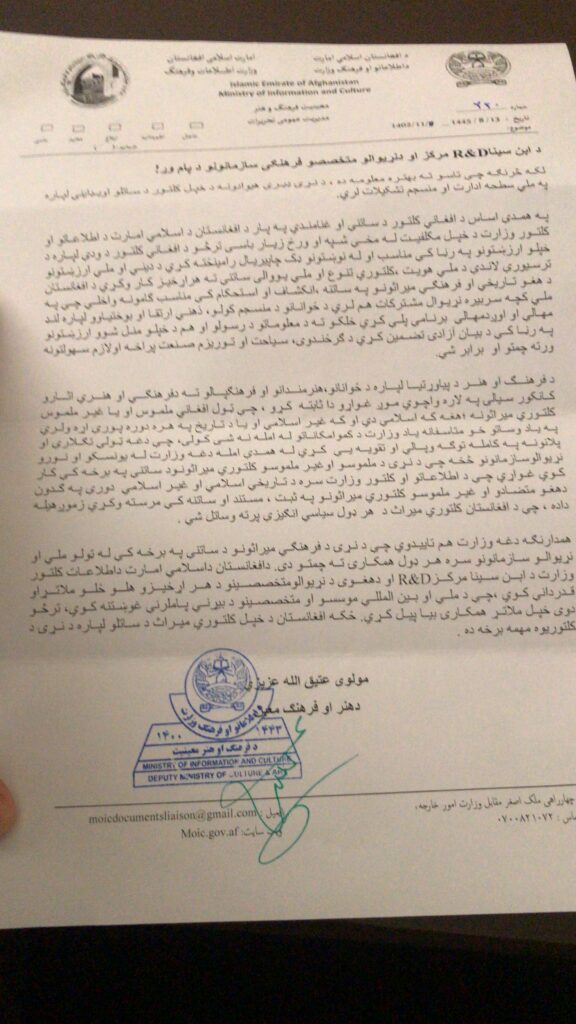
Letter of the minister of Information and Culture
Since Western researchers, based on what happened in the past, wondered about the current Afghan government’s actual policy on the issue of preservation of cultural and historical heritage, the Ibn-e-Sina Research and Development Center questioned the relevant authorities in Kabul.
At the end of January 2024, the Minister of Arts and Culture, in an hand-signed letter, provided them (and the world) with the following response, which completely clarifies the matter.
Transcript below, bold as in the original.
Islamic Emirate of Afghanistan
Ministry of Information and Culture
Letter N° 220, Jan. 31, 2024
To the attention of Ibn-e-Sina R&D Centre, International experts and cultural organizations and to those it concerns:
The ministry of Information and culture of the Emirate of Afghanistan (IEA) has, among others, the following tasks in its portfolio:
–To establish a suitable environment for the growth of genuine Afghan culture;
–To protect national identity, cultural diversity, and national unity;
–To preserve tangible and intangible cultural heritage;
–To support the development of creativities, initiatives and activities of various segments of the society in general and of the Afghan youth in particular;
–To support the freedom of speech;
–Development of tourism industry;
–Introduction and presentation of Afghan culture regionally and internationally, to transform Afghanistan into an important cultural hub and crossroads in the near future.
We would like to confirm that with preservation of tangible and intangible cultural heritage we mean all Afghan cultural heritage belonging to all periods of history, whether it belongs to Islamic or non/pre-Islamic periods of history.
This ministry expresses its concerns that due to insufficient means it is not able to preserve the Afghan cultural heritage sufficiently.
Therefore this ministry asks UNESCO and other international organizations, working on preservation of the world’s tangible and intangible cultural heritage, to support Afghanistan in preservation of its tangible and intangible cultural heritage, including the ones belonging to Islamic and non/pre-Islamic periods of its history. The cultural heritage of Afghanistan does deserve to be preserved without any political motivations.
Besides, this ministry also confirms it is ready for all kind of cooperation with all national and international organizations, working on preservation of world cultural heritage.
The ministry of Information and culture of the Islamic Emirate of Afghanistan (IEA) supports and appreciates all efforts of the Ibn-e-Sina R&D centre and their international experts in appealing for urgent attention of national and international organizations and experts to resume their support and cooperation with Afghanistan to preserve its cultural heritage, an important part of world cultural and historical heritage.
Sincerely,
Mowlavi Atiqullah Azizi
Deputy Minister of Culture and Art
moicdocymentsliaison@gmail.com
Afghanistan : « Le pays des 1000 cités d’or » et l’histoire d’Aï Khanoum
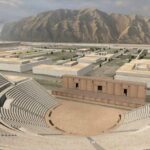


Invité par le Centre de recherche et de développement Ibn-e-Sina en tant que représentant de l’Institut Schiller, Karel Vereycken est intervenu le 7 novembre à la conférence sur la reconstruction du pays.
Son propos introductif, devant un groupe de travail composé d’historiens, d’archéologues et de membres de l’Académie des sciences d’Afghanistan, a donné lieu à une longue après-midi d’échanges sur le rôle de l’art, la méthodologie scientifique et les combats à mener pour sortir l’Afghanistan de son isolement et préserver un héritage culturel qui certes est afghan, mais appartient à toute l’humanité.
Parler de la culture d’un pays étranger est toujours une chose difficile, surtout si l’on n’en connaît pas la langue et si l’on n’a pas pu séjourner et voyager dans le pays pendant de longues périodes. Par conséquent, je ne peux que vous offrir mes impressions de l’extérieur et commenter ce que j’ai découvert dans des livres. Vous allez donc m’aider en me corrigeant et en me signalant ce qui a échappé à mon attention.
L’Afghanistan est un pays fascinant. Sa réputation de « tombeau des Empires » a capté mon imagination. Récemment, votre pays s’est émancipé de l’occupation américaine et de l’OTAN. Une poignée de combattants déterminés a mis en déroute un immense empire déjà en train de s’autodétruire. 34 ans plus tôt, le pays avait chassé l’occupant russe, après avoir résisté à l’Empire britannique au cours des trois guerres anglo-afghanes du XIXe siècle (1839-42, 1878-80 et 1919), alors que Londres, engagé dans le « Grand Jeu » (Great Game), tentait d’empêcher la Russie d’accéder aux mers chaudes.
Pour éviter d’être colonisé à la fois par la Russie et la Grande-Bretagne, l’Afghanistan a même courageusement refusé d’avoir des chemins de fer, ce qui explique qu’il n’existe aujourd’hui que 300 km de voies ferrées, une situation bien sûr inacceptable aujourd’hui.
Cette capacité de résistance et ce sentiment de dignité découlent, j’en suis convaincu, du fait que votre pays a su faire siennes les diverses influences qui s’y sont rencontrées. Voilà ce qui est devenu au fil des siècles le socle d’une forte identité afghane, totalement à l’opposé de l’étiquette tribale que les colonisateurs cherchent à lui coller.
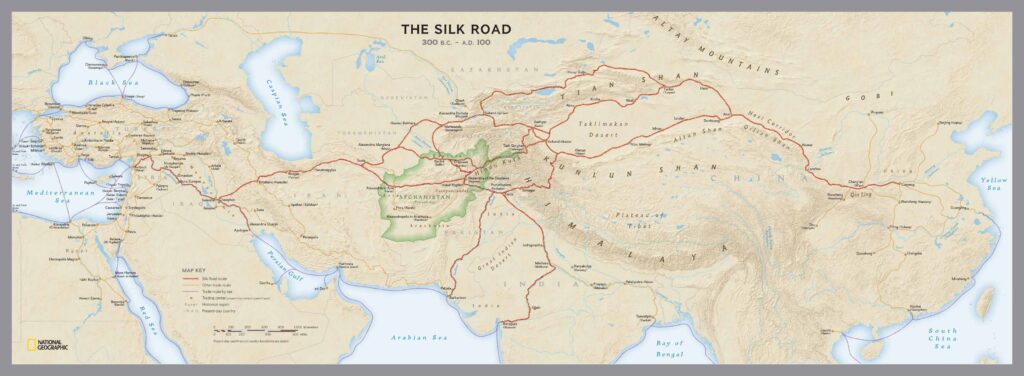
J’aborderai uniquement, aujourd’hui, l’influence grecque, qui s’est avérée majeure à partir du moment où Alexandre le Grand traverse le Hindou Kouch, en 329 av. JC.
Dès lors, des dizaines de milliers de colons grecs, appelés Ioniens, s’installent en Asie centrale.
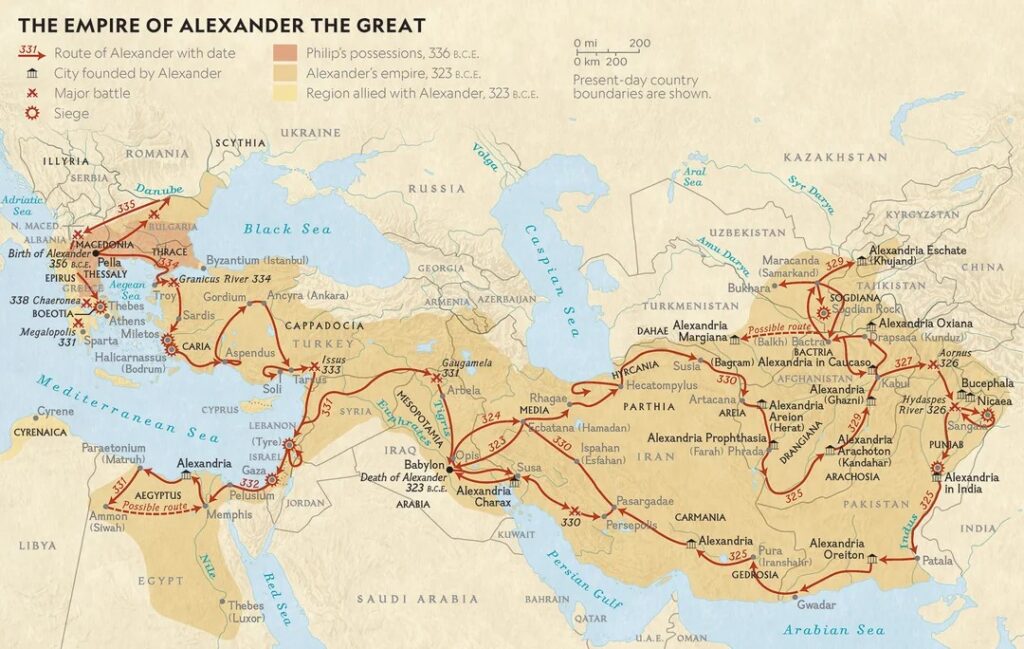
Sous le règne de ses successeurs concurrents, l’immense empire d’Alexandre le Grand se décompose en plusieurs entités et royaumes.
En 256 av. JC, Diodote Ier Soter fonde en Afghanistan le royaume gréco-bactrien, connu sous le nom de « Bactriane », dont le territoire englobe une grande partie de l’Afghanistan, de l’Ouzbékistan, du Tadjikistan et du Turkménistan actuels, ainsi que certaines parties de l’Iran et du Pakistan. L’influence grecque y perdure au moins jusqu’à l’arrivée de l’Islam au VIIIe siècle.
La Bactriane
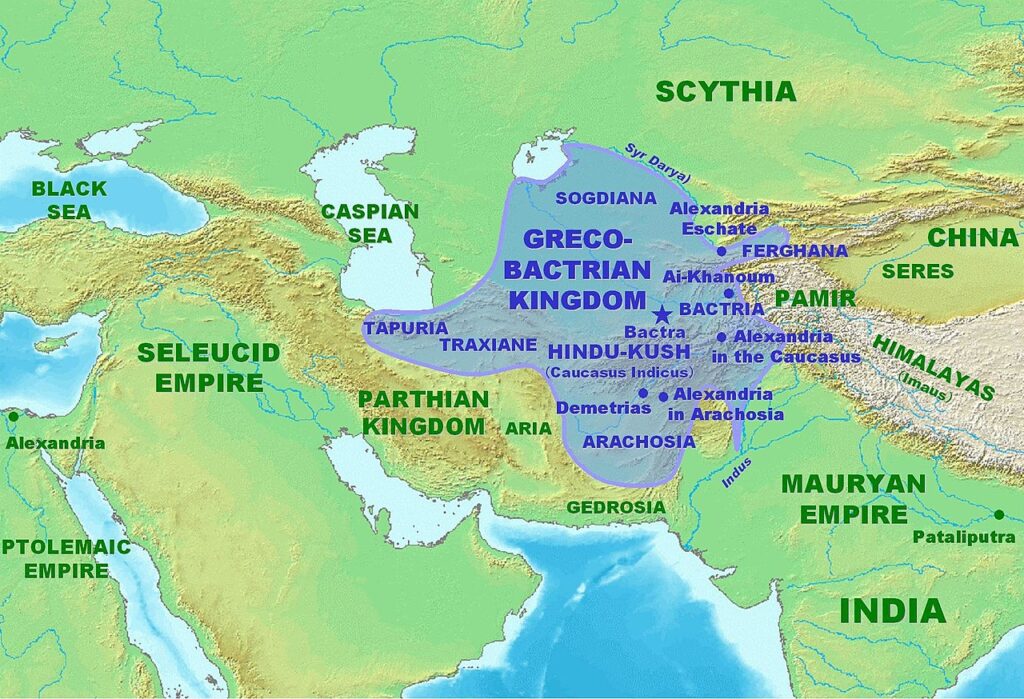
De nombreuses fouilles archéologiques confirment un développement urbain, économique, social et culturel remarquable.
Strabon (64 av. JC – 24 après JC), comme d’autres historiens grecs, qualifiait déjà la Bactriane de « Terre des mille cités », une terre que tous les écrivains, anciens et modernes, louaient pour la douceur de son climat et sa fertilité, car « la Bactriane produit tout, sauf de l’huile d’olive. »
Pour le naturaliste romain Pline l’Ancien (23 – 79 après JC), en Bactriane,
« les grains de blé poussent si gros qu’un seul grain est aussi gros que nos épis. »
Sa capitale Bactres (aujourd’hui Balkh, proche de Mazâr-e Charîf au nord de l’Afghanistan), « Mère des cités », figure parmi les villes les plus riches de l’Antiquité.

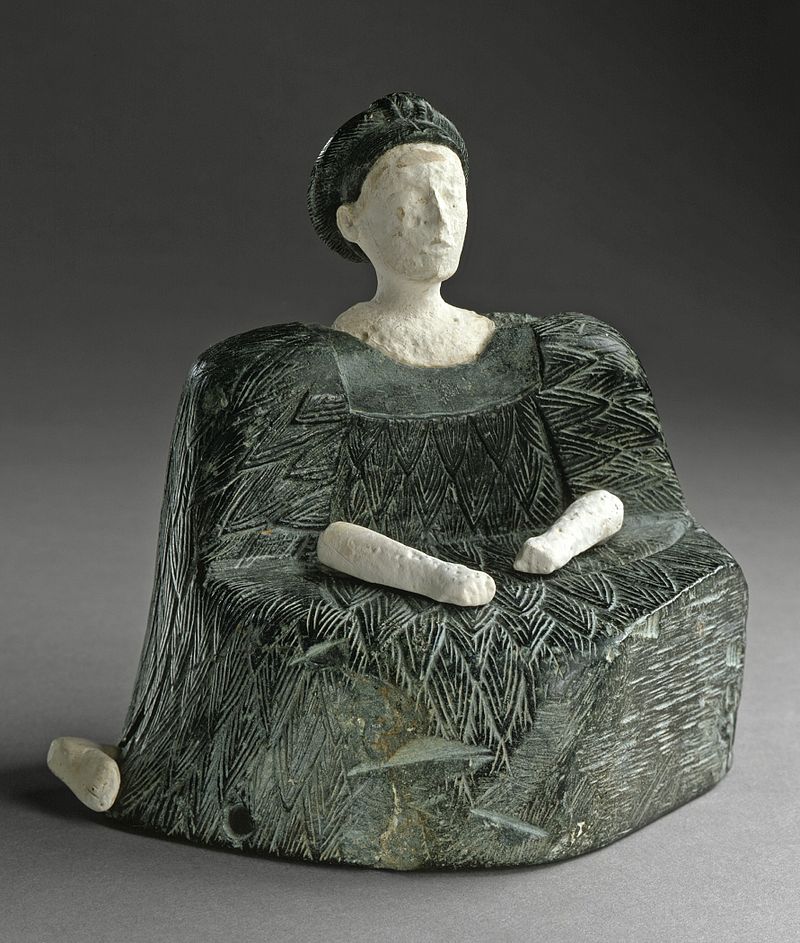
C’est là qu’Alexandre le Grand épouse Roxana (« Petite étoile ») et adopte l’habit perse pour pacifier son Empire. C’est également là que naîtra le père du grand médecin et philosophe Ibn Sina (Avicenne), avant de s’installer à Boukhara (Ouzbékistan).
Au fil du temps, la Bactriane sera le creuset de cultures et de civilisations où se mêlent, sur le plan artistique, architectural et religieux, traditions grecques et cultures locales.
Si le grec y est la langue de l’administration, les langues locales y foisonnent. Rien que les noms des villes démontrent la prédominance de la culture hellénique.
Ainsi, Ghazni s’appelle « Alexandrie en Opiana », Bagram « Alexandrie au Caucase », Kandahar « Alexandrie Arachosia », Hérat « Alexandria Ariana », etc., et la liste ne s’arrête pas là.
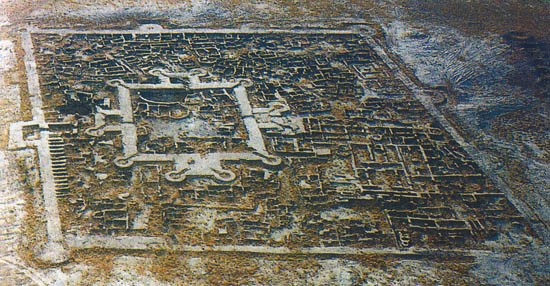
La ville de Gonur Depe (actuellement au Turkménistan, au nord de Mary, l’ancienne Merv), capitale du Royaume de Margiane, est un autre exemple de ce qu’on s’accorde maintenant à appeler la « Culture de l’Oxus »)
Aï Khanoum, la grecque

Si certaines villes ne font que changer de nom, d’autres sont construites ex nihilo. C’est le cas d’Aï Khanoum (« Dame Lune » en ouzbek), cité érigée au confluent du grand fleuve Amou Daria (l’Oxus des Grecs) et de la rivière Kokcha.
En 1961, le roi d’Afghanistan (Mohammed Zahir Shah), voulant marquer son indépendance vis-à-vis des Soviétiques et des Américains, invite la France à participer aux fouilles.
C’est le Département des archéologues français en Afghanistan (DAFA) qui met au jour les vestiges d’un immense palais dans la ville basse, ainsi qu’un grand gymnase, un théâtre pouvant accueillir 6000 spectateurs, un arsenal et deux sanctuaires.
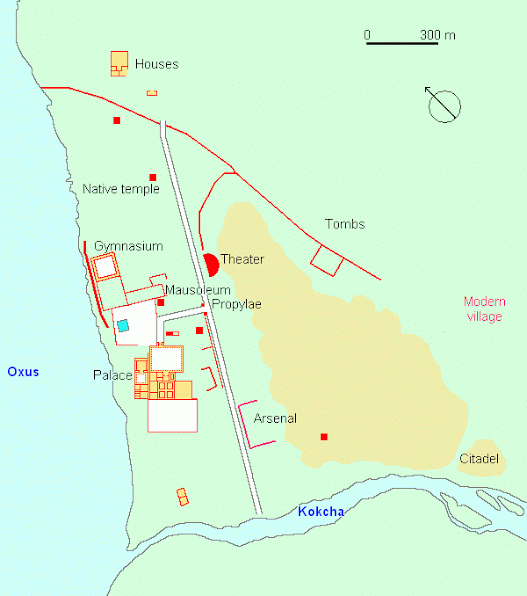
Entourée de terres agricoles bien irriguées, la ville elle-même était divisée entre une ville basse et une acropole de 60 mètres de haut.
Bien qu’elle n’est pas située sur une route commerciale majeure, Aï Khanoum commande l’accès aux mines du Hindou Koush. De vastes fortifications, continuellement entretenues et améliorées, entourent la ville.
Un monument au cœur de la ville y présente une stèle inscrite en grec avec une longue liste de maximes incarnant les idéaux de la vie grecque. Celles-ci sont copiées de Delphes et se terminent par :
« Dès l’enfance, apprends les bonnes manières ;
dans la jeunesse, maîtrise tes passions ;
dans la vieillesse, sois de bon conseil ;
dans la mort, n’aie aucun regret. »
L’architecture du site indique que les colons grecques y vivent en bonne entente avec les populations locales. Elle est très grecque mais intègre en même temps diverses influences artistiques et éléments culturels que les Ioniens ont pu observer au cours de leur voyage du bassin méditerranéen à l’Asie centrale. Par exemple, ils utilisent les styles néo-babylonien et achéménide pour la construction de leurs cours.
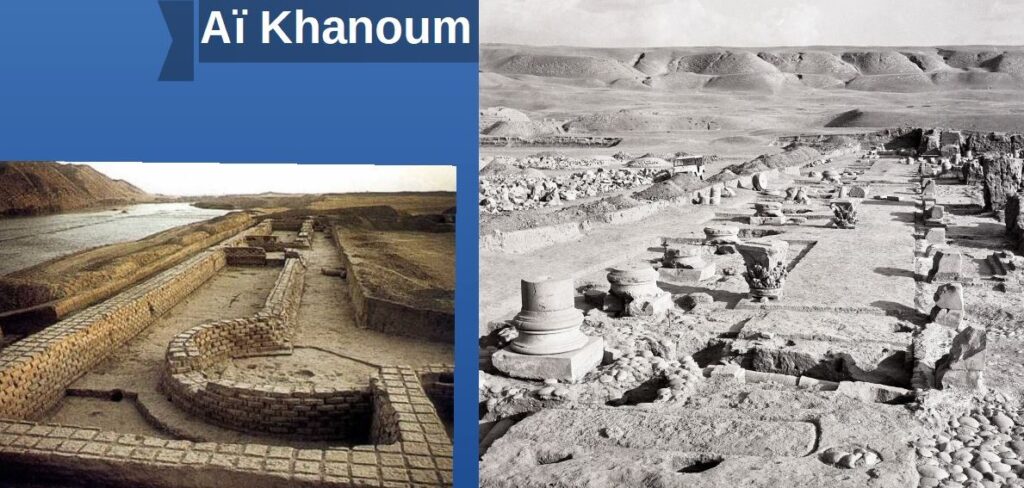
Shortugai et la Civilisation de la vallée de l’Indus

La date précise des premières fondations d’Aï Khanoum reste inconnue.
A une jetée de là, Shortugai, avant-poste commercial et minier de la fameuse civilisation de l’Indus (dite « harappéenne ») qui, au IIIe millénaire avant notre ère, était à l’avant-garde sur le plan de l’irrigation et de la maîtrise de l’eau. (voir notre article)
Des scientifiques de l’Institut indien de technologie de Kharagpur et du Service archéologique d’Inde ont publié le 25 mai 2016, dans la revue Nature, les fruits d’une recherche qui permettrait de dater la civilisation harappéenne d’au moins 8000 ans avant JC et non 5500 ans, comme on le croyait jusqu’à présent. Cette découverte majeure signifierait qu’elle serait encore plus ancienne que les civilisations mésopotamienne et égyptienne.
Shortugai est construite avec des briques standardisées typiques de la vallée de l’Indus. Des sceaux de la civilisation de la vallée de l’Indus ont également été trouvés sur d’autres sites archéologiques d’Afghanistan.
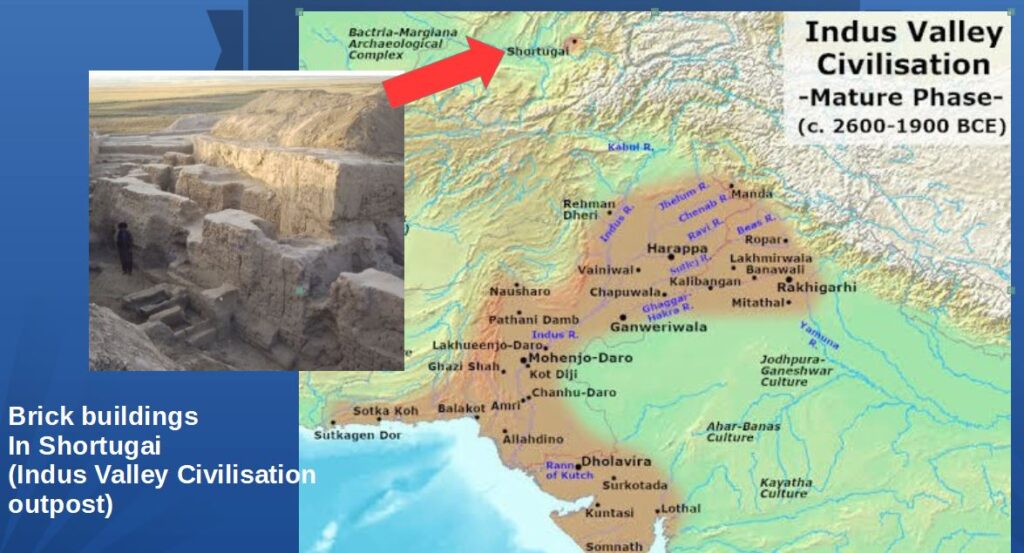
Pendant plusieurs siècles, Shortugai a fonctionné comme un site minier exceptionnel pour l’extraction de l’étain (un minerai indispensable pour la fabrication du bronze), de l’or et du fameux lapis-lazuli, cette pierre précieuse bleue qui, avec l’or, habille de sa splendeur la tombe du pharaon égyptien Toutankhamon et d’autres tombes religieuses majeures en Mésopotamie (Irak).
Les données archéologiques démontrent que Shortugai commerçait avec ses voisins d’Aï Khanoum et construisit les premiers systèmes d’irrigation de la région, une spécialité de la civilisation de la vallée de l’Indus.
Bien des sites restent inexplorés en Afghanistan, pays où les guerres, les occupations étrangères et les pillages ont perturbé ou rendu impossible les recherches archéologiques.
Voici quelques-unes des découvertes de la DAFA, dont certaines restent exposées au Musée national de Kaboul.
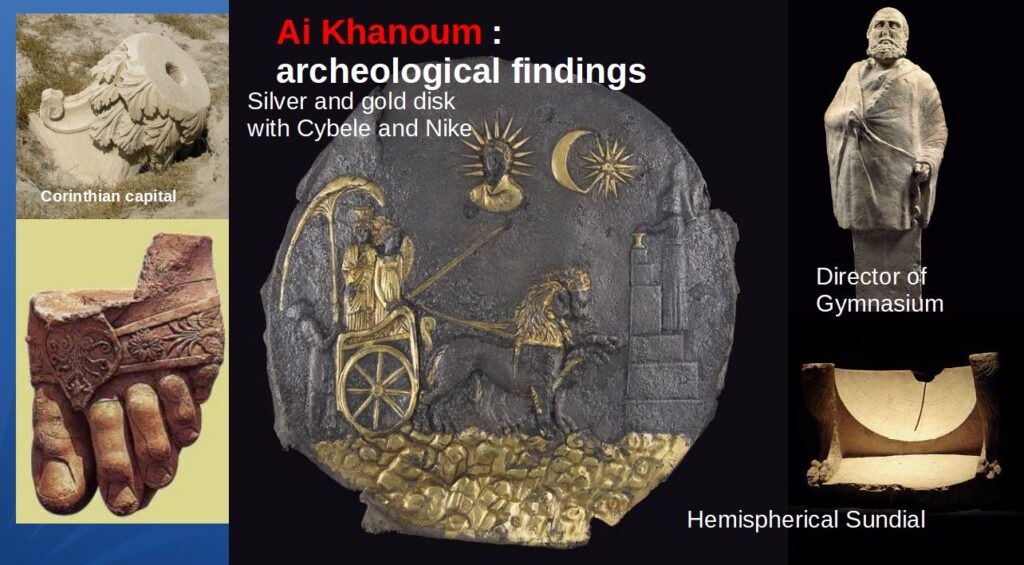
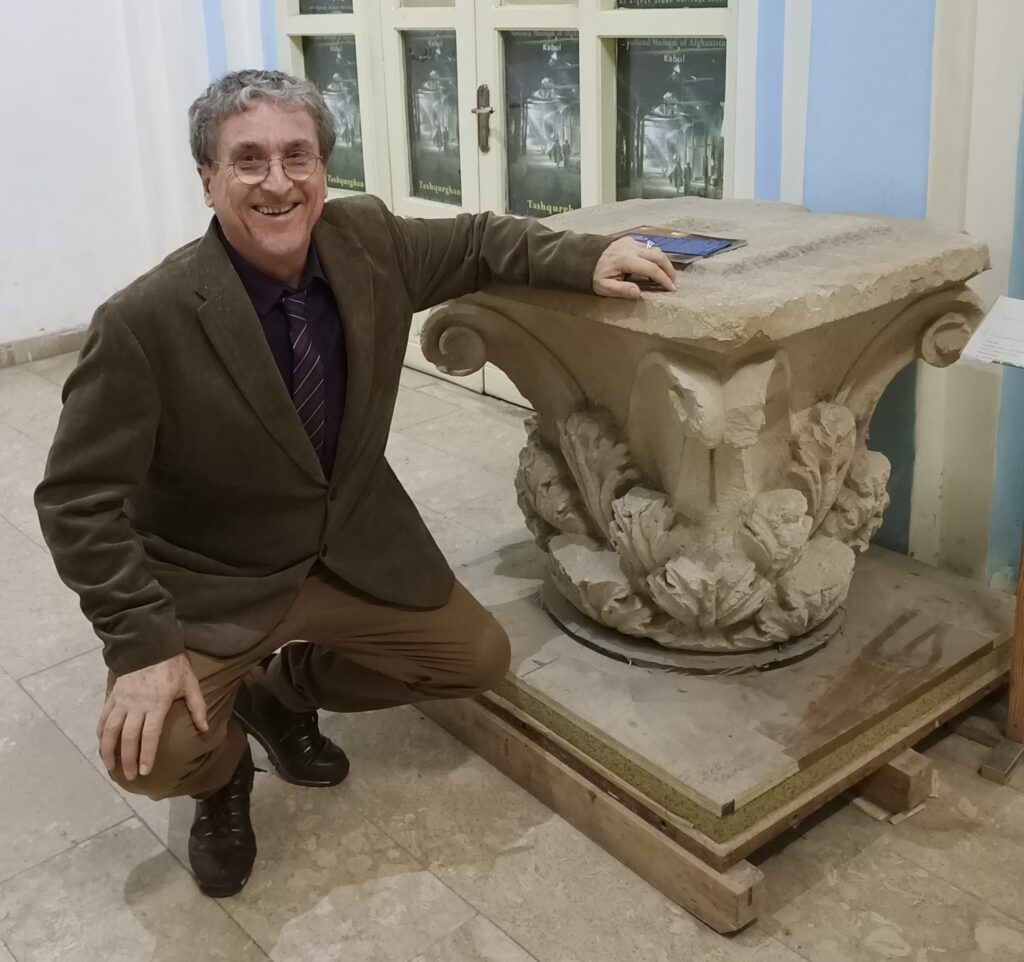
Relations avec l’Inde
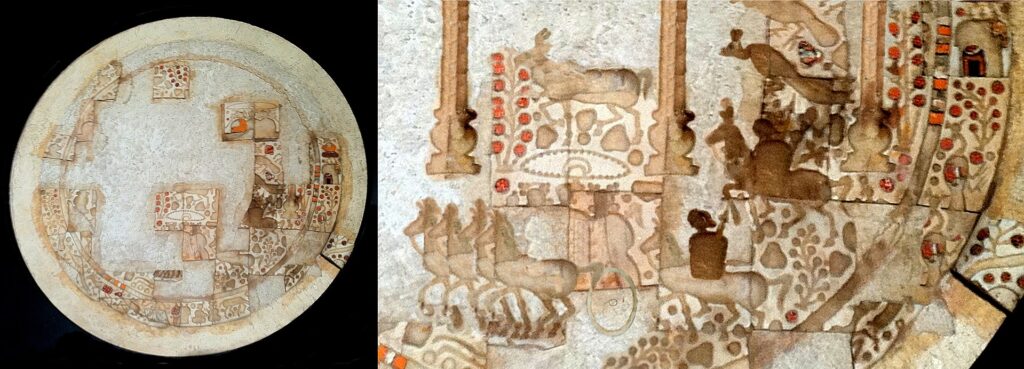
Ce qu’on a trouvé à Aï Khanoum, les pièces de monnaie, les objets et les céramiques, notamment d’origine indienne, témoigne qu’il s’agissait d’une importante plaque tournante du commerce avec l’Inde.
En 258 avant notre ère, Ashoka le Grand, souverain de l’empire Maurya (l’État dominant en Inde), fait ériger ce que l’on appelle « l’Edit grec d’Ashoka à Kandahar », une inscription rupestre bilingue, en grec et en araméen. Une autre inscription d’Ashoka était rédigée uniquement en grec.
Le contenu même de ces édits donne également une indication claire du niveau des échanges entre l’Inde et le monde hellénistique. Par exemple, dans son XIIIe édit, Ashoka, faisant preuve d’érudition, énumère avec précision tous les souverains du monde hellénistique de son époque.

Relations avec la Chine
Outre son interaction avec le sous-continent indien, la Bactriane établira des contacts avec une puissance située encore plus à l’est : la Chine.
À la fin du IIe siècle avant JC, Zhang Qian, diplomate et explorateur de la dynastie Han, arrive en Bactriane. Le récit de sa visite, y compris son étonnement d’y trouver des marchandises chinoises sur les marchés (acquises via l’Inde), ainsi que ses voyages dans le reste de l’Asie centrale, sont conservés dans les œuvres de l’historien Sima Qian.
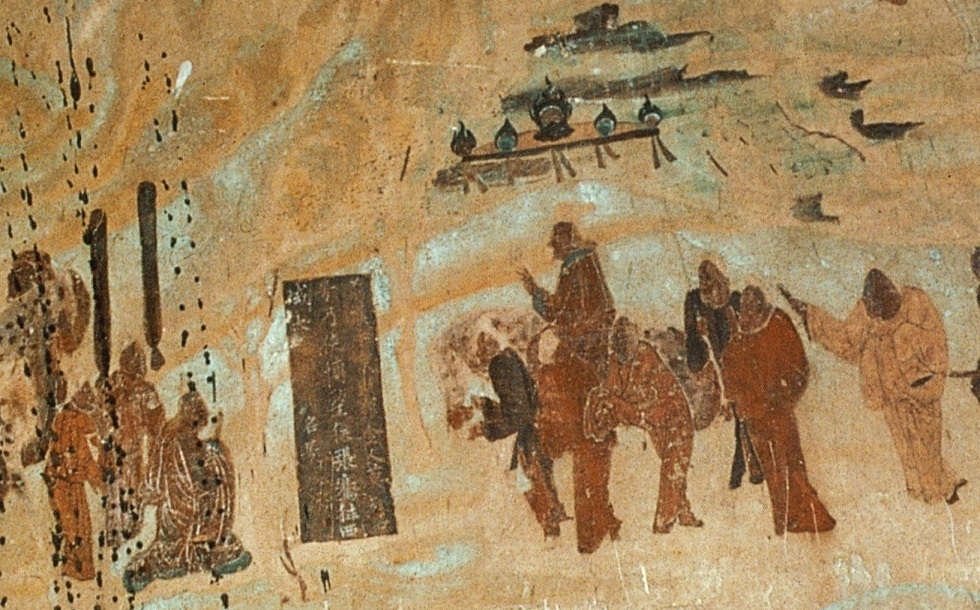
À son retour en Chine, Zhang Qian informe l’empereur de l’existence de civilisations urbaines sophistiquées en Asie centrale : le Dayuan (vallée de la Ferghana), la Bactriane (Afghanistan) et la Partie (nord-est du plateau iranien).
Les découvertes de Zhang Qian incitent l’empereur à envoyer des émissaires chinois en Asie centrale pour y favoriser le commerce avec la Chine. Certains historiens n’hésitent pas à qualifier cette décision de l’Empereur chinois de « naissance de la Route de la soie ».
Déclin et chute

Une grande partie des ruines actuelles d’Aï Khanoum datent de l’époque d’Eucratides Ier (172-145 av. JC), qui a considérablement réaménagé la ville et l’a peut-être rebaptisée Eucratideia, d’après son nom.
Il fut assassiné en 145 av. JC. par son fils. Un an plus tard, le royaume s’effondre face à l’invasion des nomades.
Aï Khanoum est pillée une première fois en 145 av. JC par les Sakas, des tribus iraniennes d’origine scythe, suivis quinze ans plus tard par les nomades chinois Yuezhi.
Le « complexe du trésor » d’Aï Khanoum montre des signes de pillage lors de deux assauts, à quinze ans d’intervalle. D’après des témoins oculaires, certaines villes se sont arrangées avec les envahisseurs et organisèrent une coexistence pacifique. Les villes qui ont résisté, comme Aï Khanoum, ont été pillées et incendiées.
L’empire Kouchan
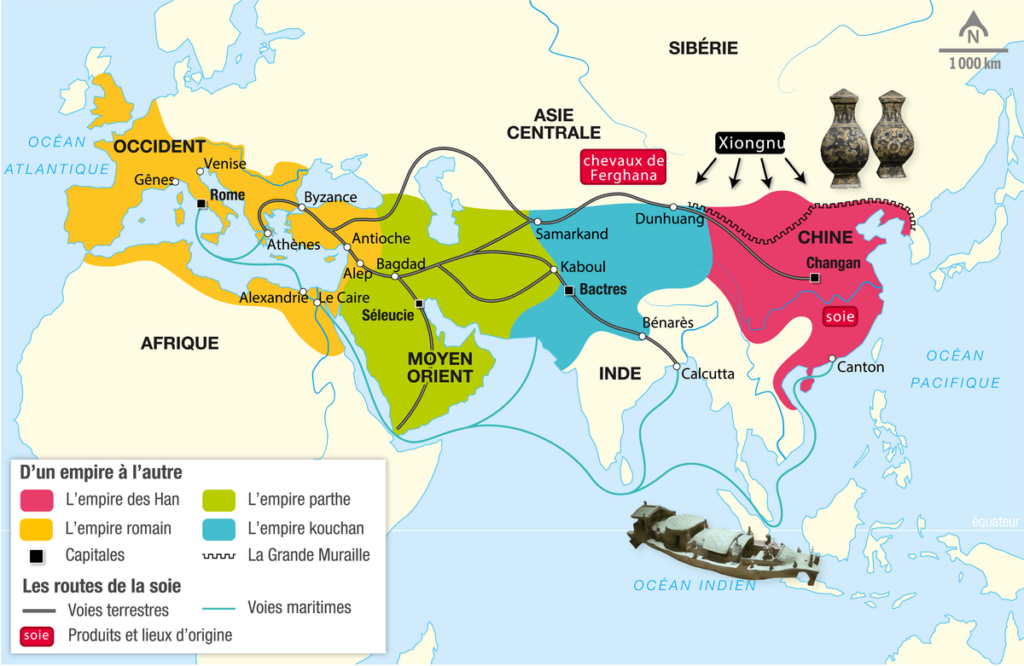
Les nomades chinois Yuezhi se sédentarisent et créent au début du Ier siècle l’Empire kouchan, qui englobe une grande partie de ce qui est aujourd’hui l’Ouzbékistan, l’Afghanistan, le Pakistan et l’Inde du Nord.
Son territoire s’étend de l’Asie centrale et du Gandhara (frontière occidentale actuelle du Pakistan) à Pataliputra, dans la plaine du Gange (Inde d’aujourd’hui). La capitale principale de son empire était située à Purushapura (aujourd’hui Peshawar au Pakistan).

C’est sous le règne de Kanishka le Grand (vers 127-150) que l’Empire kouchan deviendra célèbre pour ses réalisations militaires, politiques et spirituelles. Kanishka échange des ambassadeurs avec l’empereur romain Marc Aurèle (161-180) et l’empereur Han de Chine. Il noue des contacts diplomatiques avec la Perse sassanide et le royaume d’Aksoum (Yémen et Arabie saoudite d’aujourd’hui).
Si la dynastie kouchane reprend la tradition gréco-bactrienne, elle se forge peu à peu sa propre identité.
Les artistes kouchans enrichirent la sculpture bouddhique en donnant à Bouddha la forme humaine, innovation qui fut la plus importante de l’époque.
En 127, Kanishka remplace le grec par le bactrien, une langue moyenne iranienne utilisant l’alphabet grec.
Le bouddhisme
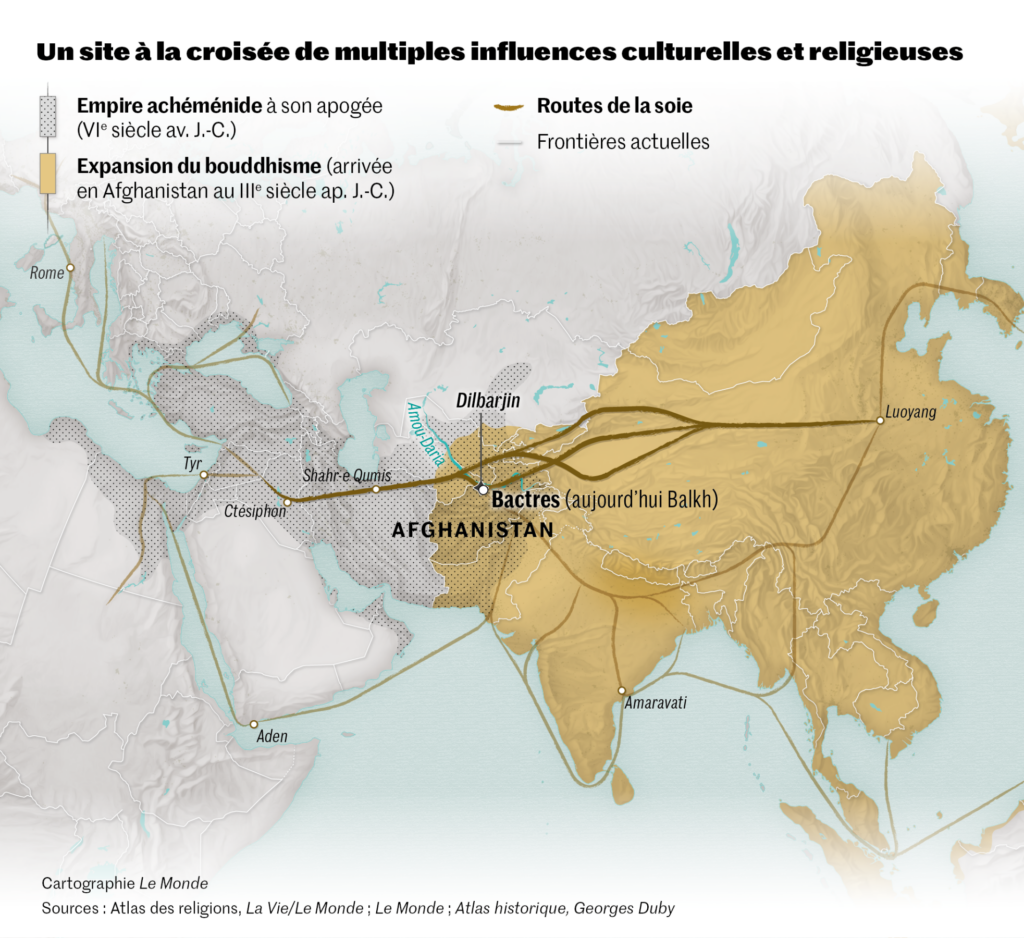
Les Kouchans joueront également un rôle majeur dans la transmission du bouddhisme. Le rayonnement de cette religion venue des rives du Gange favorisera celui des Routes de la soie.
Dans le domaine de la religion, les Kouchans, initialement attirés par l’hindouisme, joueront un rôle majeur dans la transmission du bouddhisme mahayana du Gandhara vers la Chine, l’Asie centrale et même le Sri Lanka, favorisant ainsi l’expansion de la route de la soie.
Tous ces facteurs ont inauguré une période de paix relative de 200 ans, connue comme la « Pax Kouchana ».
À partir du milieu du IIIe siècle après JC, l’Empire kouchan, affaibli, commence à se désintégrer. Dans sa partie occidentale, il passe sous le contrôle des Kushanshahs, c’est-à-dire les Indo-Sassanides (perses), progressivement supplantés au nord par les Hephtalites (appelés également les « Huns blancs » ou « Huns iraniens ») venus de la steppe d’Asie centrale.
Le bouddhisme connaît néanmoins une période de grande prospérité, comme l’illustrent les descriptions du moine chinois Xuanzang du VIIe siècle ainsi que la construction des statues géantes de bouddhas dans la vallée de Bamiyan en Afghanistan.

L’Islam
Après avoir conquis l’Iran, l’islam pénètre l’Afghanistan par le nord. Il n’y a pas de preuve d’un rejet massif de la nouvelle religion, sauf dans des régions isolées. Cependant, la volonté de rester indépendants des gouverneurs nommés par Damas (Omeyyades) puis par Bagdad (Abassides) se manifeste rapidement. C’est même à partir d’une province couvrant une partie du nord de l’Afghanistan, le Khorasan, que se répand initialement une partie de l’insurrection contre les Omeyyades pour les remplacer par le califat abbasside d’Haroun-al-Rachid, plus humaniste, et la création de Bagdad (voir notre article).
À partir de la fin du Xe siècle, une dynastie d’origine turque, les Ghaznévides, bâtit autour de leur capitale Ghazni (Afghanistan) un vaste sultanat qui s’étend jusqu’en Inde et fonde une communauté musulmane durable.

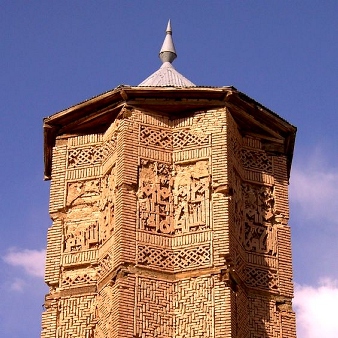
Leur influence culturelle se mesure par la beauté de l’architecture qu’ils nous ont laissée, mais aussi par le patronage qu’ils accordèrent au grand poète épique Ferdowsi (940-1025), à qui l’on doit la grande épopée nationale en langue persane, le Shahnameh : Le livre des rois.
Les Ghaznévides ont été suivis par une nouvelle dynastie, les Ghorides, originaire de la partie centrale de l’Hindou Kouch. C’est à eux que l’on doit l’impressionnant minaret de Jam.
Ce riche patrimoine culturel, qui a jeté les bases de leur identité et qui a donné sa dignité au peuple afghan, a été ignoré, détruit par les guerres successives, pillé et saccagé.
Fortement combattu par les talibans au pouvoir à Kaboul, ISIS, Daech et d’autres groupes terroristes, dont certains encouragés en sous-main par des agences de renseignement occidentales se sont livrés à un pillage à échelle quasi-industrielle du patrimoine culturel afghan. Pour eux, la revente d’objets d’art et d’antiquités est une des principales sources de revenus.
Recommandations
Aujourd’hui, le temps est venu d’un nouveau départ. L’Afghanistan peut changer complètement son image dans le monde, qui a été polluée par des adversaires et des ennemis qui veulent maintenir l’Afghanistan comme une zone de non-développement pour leur propre grand jeu géopolitique.
Ma proposition pour renouveler la contribution de l’Afghanistan à la culture mondiale est simple.
Avec Mes Aynak, qui signifie « petite mine », située à 35 km au sud de Kaboul, l’Afghanistan dispose du deuxième plus grand gisement de cuivre au monde. Alors que la Chine et les autres pays du BRICS ont besoin de ce métal précieux pour leur développement industriel, la mine offrira un revenu substantiel dont l’Afghanistan a un besoin urgent pour reconstruire le pays.
Le 25 mai 2008, Ibrahim Adel, ministre des Mines, et Shen Heting, directeur général de MCC, l’actionnaire majoritaire du consortium MCC-Jiangxi Copper MJAM, ont signé le contrat minier de Mes Aynak.
Ce contrat décrivait les conditions du premier grand projet minier et du plus important investissement étranger en Afghanistan. Cependant, suite à des incidents de sécurité qui ont créé d’importants problèmes d’insécurité, et sous la pression des puissances étrangères, le projet a été bloqué.

Paradoxalement, cela a donné aux archéologues le temps de mettre au jour sur le site minier une zone de 40 ha d’une valeur culturelle exceptionnelle de classe mondiale, principalement un vaste complexe de monastères bouddhistes, comprenant des stupas (temples), des peintures murales, des sculptures et des centaines d’artefacts archéologiques, etc.
Même si le contrat (fichier pdf) a pu être modifié depuis 2008, on ne peut que constater que le contrat initial contient une série d’aspects potentiellement très intéressants, à la fois pour la Chine mais surtout pour l’Afghanistan lui-même.
- EXPORTER DU MÉTAL, PAS DU MINERAI
De même que la Bolivie ne veut pas exporter du lithium (matière première) mais des batteries (produit fini transformé à haute valeur ajoutée), l’Afghanistan ne veut pas exporter du minerai de cuivre mais du cuivre métal. Pour atteindre cet objectif, le contrat prévoit la construction d’une fonderie sur le site.
Paragraphe IV, 33 : « Afin de respecter son engagement envers le gouvernement de financer, construire et exploiter une fonderie en Afghanistan, la MCC a demandé au gouvernement de lui donner accès à des gisements de phosphates, de calcaire et de quartz qu’elle pourra utiliser dans le cadre du projet Aynak. » - ACHATS LOCAUX
Paragraphe VII, 38 : « MCC s’efforce d’acheter des biens et des services en Afghanistan s’ils sont disponibles. » - MAIN-D’ŒUVRE LOCALE
Paragraphe VIII, 39, a : « MCC emploie du personnel afghan, dans toute la mesure du possible. » - APPROVISIONNEMENT EN EAU
Paragraphe IV, 32 : « MCC s’est engagée auprès du gouvernement à construire des puits d’approvisionnement en eau et des systèmes de canalisation … pour répondre aux besoins en eau douce du projet. La MCC s’est également engagée à réutiliser et à recycler l’eau de traitement dans la mesure du possible. » - CENTRALE AU CHARBON
Paragraphe IV, 31 : « MCC s’est engagée auprès du ministère des Mines à construire … une centrale au charbon d’une capacité de 400 mégawatts pour fournir de l’énergie électrique au projet et à Kaboul. » - CHEMIN DE FER
Paragraphe IV, 30 : « MCC s’est engagée à construire un chemin de fer associé au projet ». - LOGEMENT
Paragraphe IV, 24 : « MCC doit fournir des logements de qualité et en quantité suffisante à ses salariés et à leurs familles immédiates, à un prix de location raisonnable. » - SOINS MÉDICAUX
Paragraphe IV, 25 : « MCC fournira des soins médicaux gratuits à tous ses salariés et à leurs familles… et établira, dotera en personnel et entretiendra des dispensaires, des cliniques et des hôpitaux en nombre suffisant … » - ÉCOLES
Paragraphe IV, 26 : « MCC doit fournir gratuitement un enseignement primaire et secondaire adéquat aux enfants de tous les salariés et résidents de la zone entourant Aynak. » - CADRE DE VIE
Paragraphe IV, 27 : « MCC construira et financera le fonctionnement de centres d’activités récréatives adéquats tels que des gymnases et des terrains de sport. … En outre, il construira un marché/une zone commerciale. » - RELIGION
Paragraphe IV, 28 : « MCC respectera et protégera les convictions religieuses du peuple afghan. »
Le monde serait stupéfait en constatant que l’Afghanistan mobilise ses meilleurs architectes et urbanistes pour construire une nouvelle ville à Mes Aynak qu’il baptisera poétiquement, l’« Aï Khanoum du XXIe siècle ».
A Kaboul, un archéologue de premier plan qui travaille sur le site depuis une décennie, m’a confié avec une joie non-dissimulée que, suite à d’intenses discussions en octobre dernier entre les autorités afghanes et l’entreprise chinoise, une issue heureuse a été trouvée.
A l’heure actuelle, dit-il, les deux parties ont convenu de préserver, non plus une infime partie du site archéologique (la partie centrale avec les temples bouddhistes), mais l’ensemble des vestiges historiques du site en surface. A en croire mon interlocuteur, la décision est prise que l’ensemble du site sera désormais exclusivement exploité par la technique d’exploitation minière souterraine. N’en déplaise à la presse occidentale, le sauvetage de Mes Aynak révèle au monde le vrai visage du nouveau gouvernement afghan.
Il rendra également pensable, d’ici un certain temps, la reconstruction des bouddhas géants de la vallée de Bamiyan, l’un de 55 mètres et l’autre de 38 mètres, détruits en 2001. Plusieurs experts, lors de colloques récents de l’UNESCO, ont précisé que les difficultés techniques ne sont pas insurmontables, les bouddhas étant fabriqué en stuc. Le soi-disant « danger » que les sculptures soient considérées comme « fausses » n’a aucun sens, tant que l’intention d’atteindre un bien supérieur par leur reconstruction est réelle.
La « Proposition technique pour la revitalisation des statues du Bouddha de Bâmiyân » de 2017, élaborée par le département d’architecture de l’université japonaise Mukogawa Women’s University, mérite d’être examinée. Sans doute pourra-t-on faire mieux, mais elle a le mérite d’exister. Des chercheurs chinois se disent également prêts à donner un coup de main.
Rappelons que le monde compte 620 millions de bouddhistes qui considèrent Bamiyan comme une partie de leur culture et pourraient envisager de venir en Afghanistan pour mieux comprendre leur propre histoire.
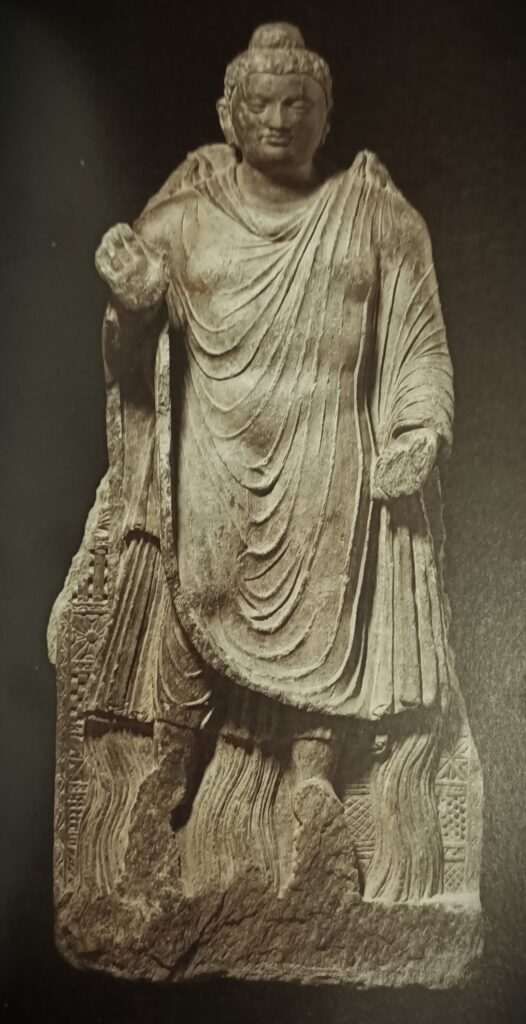
Si l’Afghanistan indiquait clairement au monde qu’il a décidé de renforcer ses activités économiques et minières tout en protégeant, notamment grâce à l’aide généreuse de la Chine, le patrimoine culturel mondial sur son sol, il apparaîtra aux yeux de tous ce qu’il est désormais aujourd’hui : une force du bien, de la tolérance et de la paix dans le monde, en cohérence avec sa propre identité et son histoire.
L’Afghanistan apparaîtra comme le « Bouddha de feu » (IIe-IIIe siècle) du Musée national de Kaboul, où l’on voit la réponse donnée par Bouddha à un défi lancé par des hérétiques selon lequel il ne pouvait pas faire de miracles.
Connu sous le nom de « miracles jumeaux », on y voit Bouddha confiant avec des flammes sortant de ses épaules et des cours d’eau de ses pieds ! En altérant ces deux flux, dit la légende, Bouddha a même fait apparaître un arc-en-ciel !
En augmentant sa production d’énergie et en gérant d’une façon plus intelligence ses ressources en eau, l’Afghanistan démontrera, j’en suis convaincu, sa splendide force spirituelle !
Merci à tous et j’ouvre le débat à vos questions.